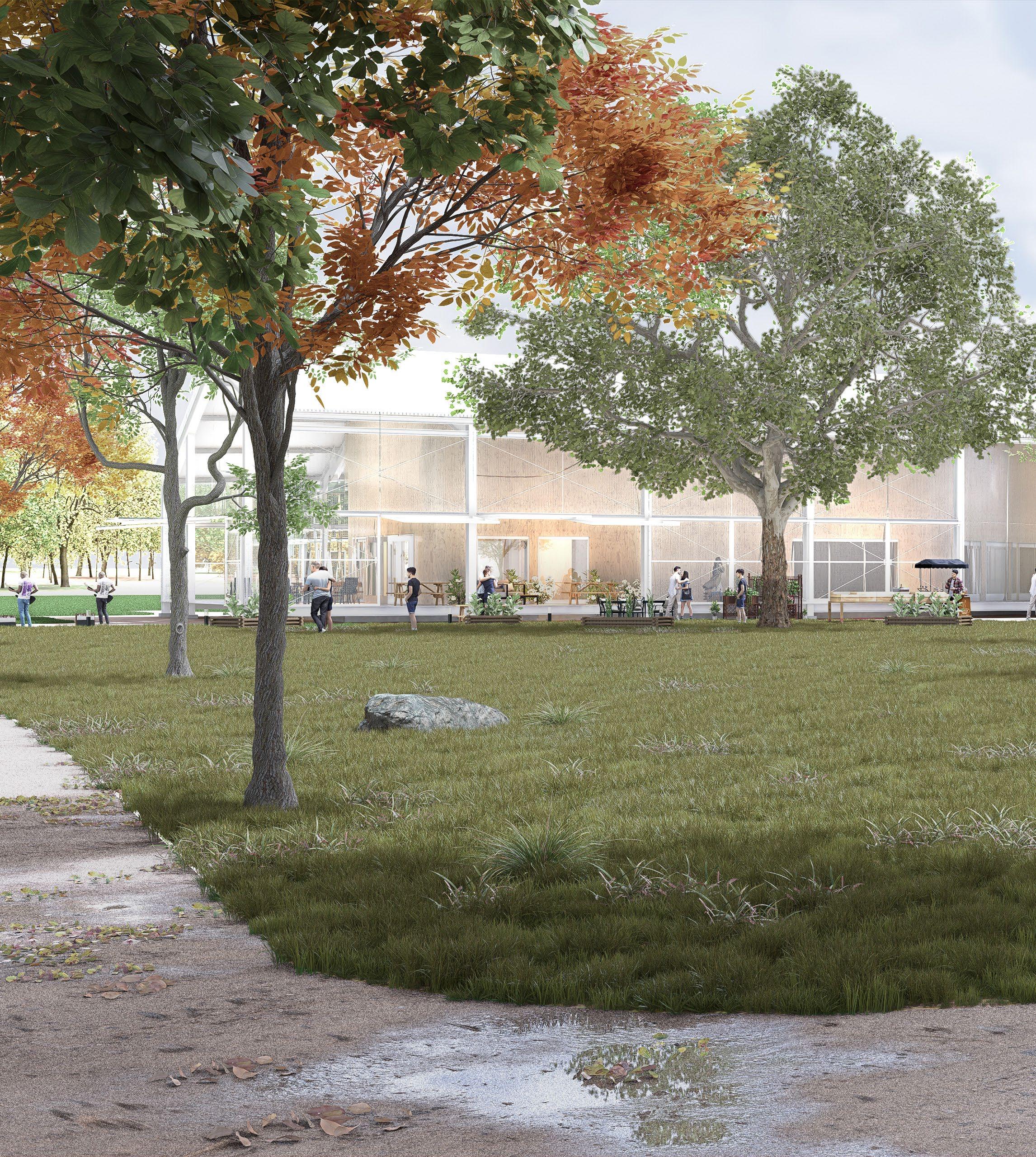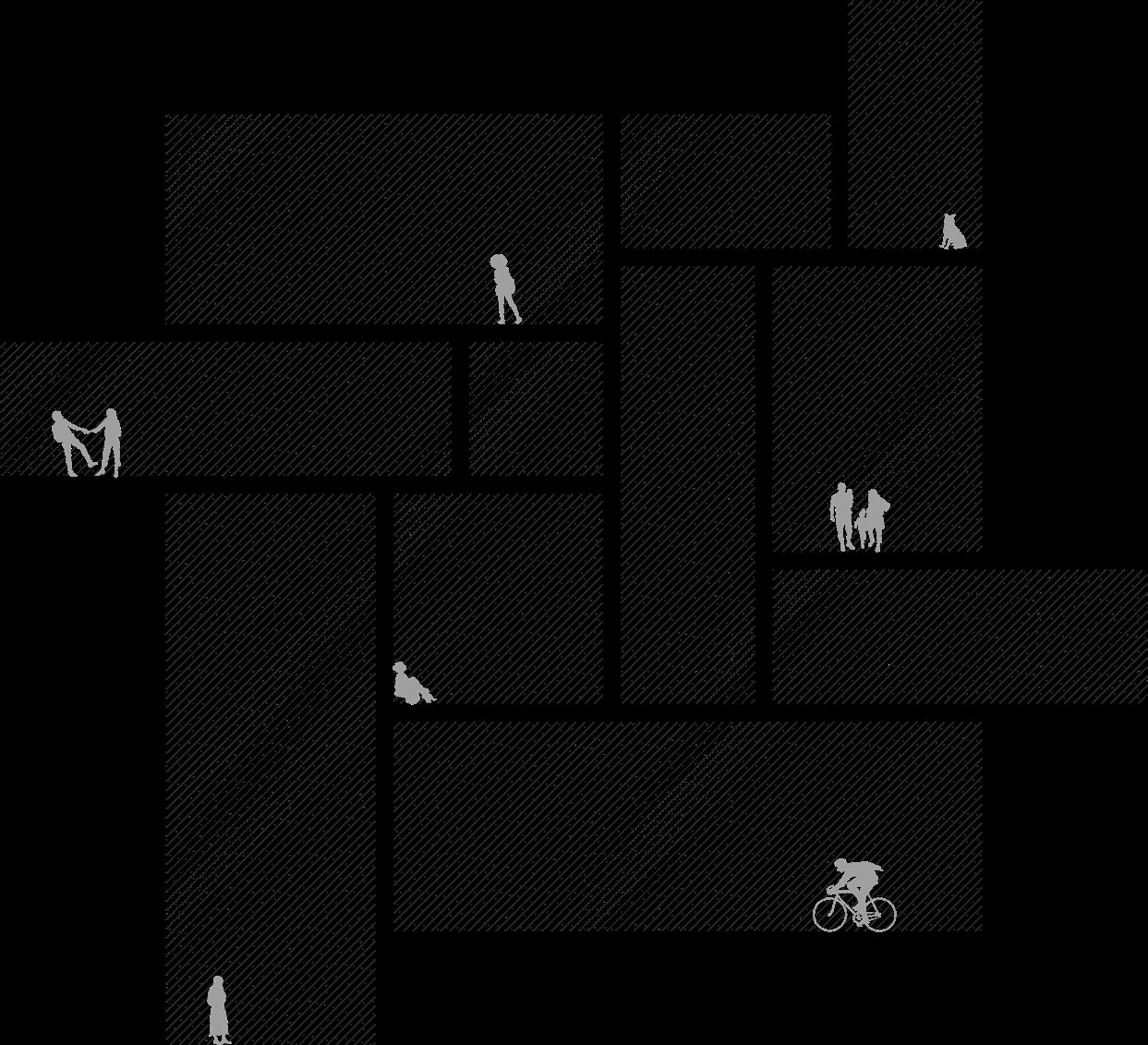

ALEX PIÑA
EDUCATION
Master of Architecture | DEC 2025
Rice University | GPA 3.96
Bachelor of Environmental Design | 2023
Texas A&M University | GPA 3.94
Minor in Business
International Studies | JAN-APR 2022
Barcelona Architecture Center | GPA 4.0
EXPERIENCE
OMNIPLAN Architects | Dallas, Texas | JUN-AUG 2023
Architectural Intern
AMO Enterprises | El Paso, Texas | JUN-AUG 2022
Drafting Assistant
Banes General Contractors | El Paso, Texas | JUN-AUG 2021
Field Engineering Intern
ACADEMIC INVOLVEMENT
Graduate Research Assistant | 2023-2024
With Mark Wamble - Professor in the Practice
American Institute of Architecture Students | 2019-2023 Organization Member
Environmental Design Mentorship Program | 2019-2023 Mentor
Freedom By Design | 2021-2023
Organization Subcommittee Member
HONORS & AWARDS
Buildner Design Competition
Student Award Winner 2024
MBMA Design Competition
2022
Axiom Publication
2020 | 2023
BAC Program Publication
2022
SKILLS
Bilingual- English & Spanish
Modeling
Rhino
Revit
AutoCad
SketchUp
Rendering
Vray
D5 Render
Lumion
Enscape
Adobe Suite
Photoshop
Illustrator
InDesign

EFFERENT
Professor | Marcel Erminy Team | Christian MartinezOur project aimed to act as the symbol of refuge to the community. We understood fire as on element with a sense of duality, as it can be viewed as the utter destruction of everything it consumes, while the antithesis can be understood as an element that strengthens and brings revitalizing properties. To achieve this, we decided to incorporate an urgent care and health center into our program. Not only did the additional program support our design narrative, but also addressed the need for healthcare in such a rapidly growing area. With this mixture of programs, the station now accomplishes the purpose of being a place of refuge and strengthening. The structural design utilized the structural advantages of steel. The use of a large steel truss member allows for the crew living areas to be housed above the apparatus bay entrance, while maintaining columnless circulation.
Contributions | research, design, modeling, drawings, details, sections, and structural design

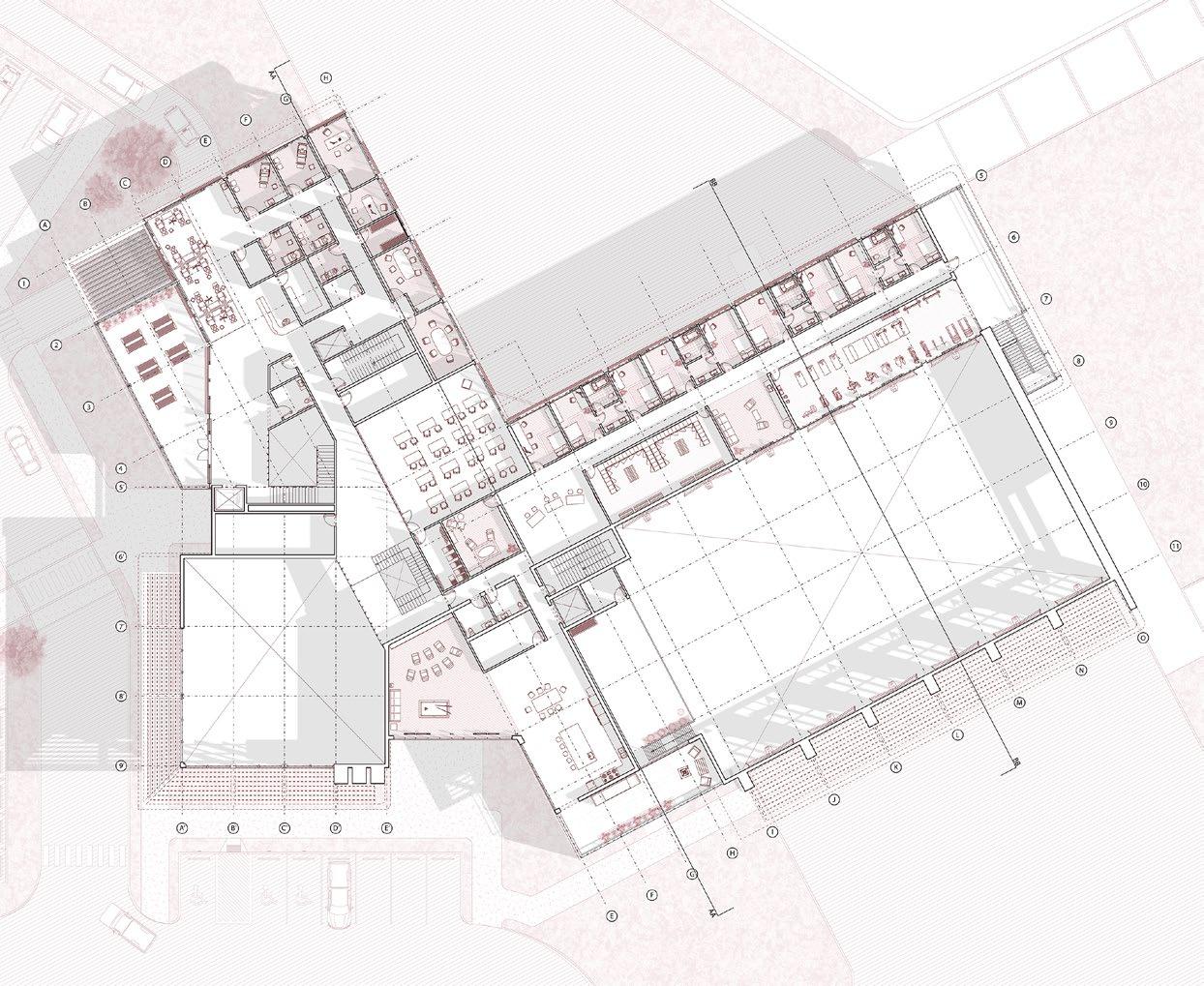
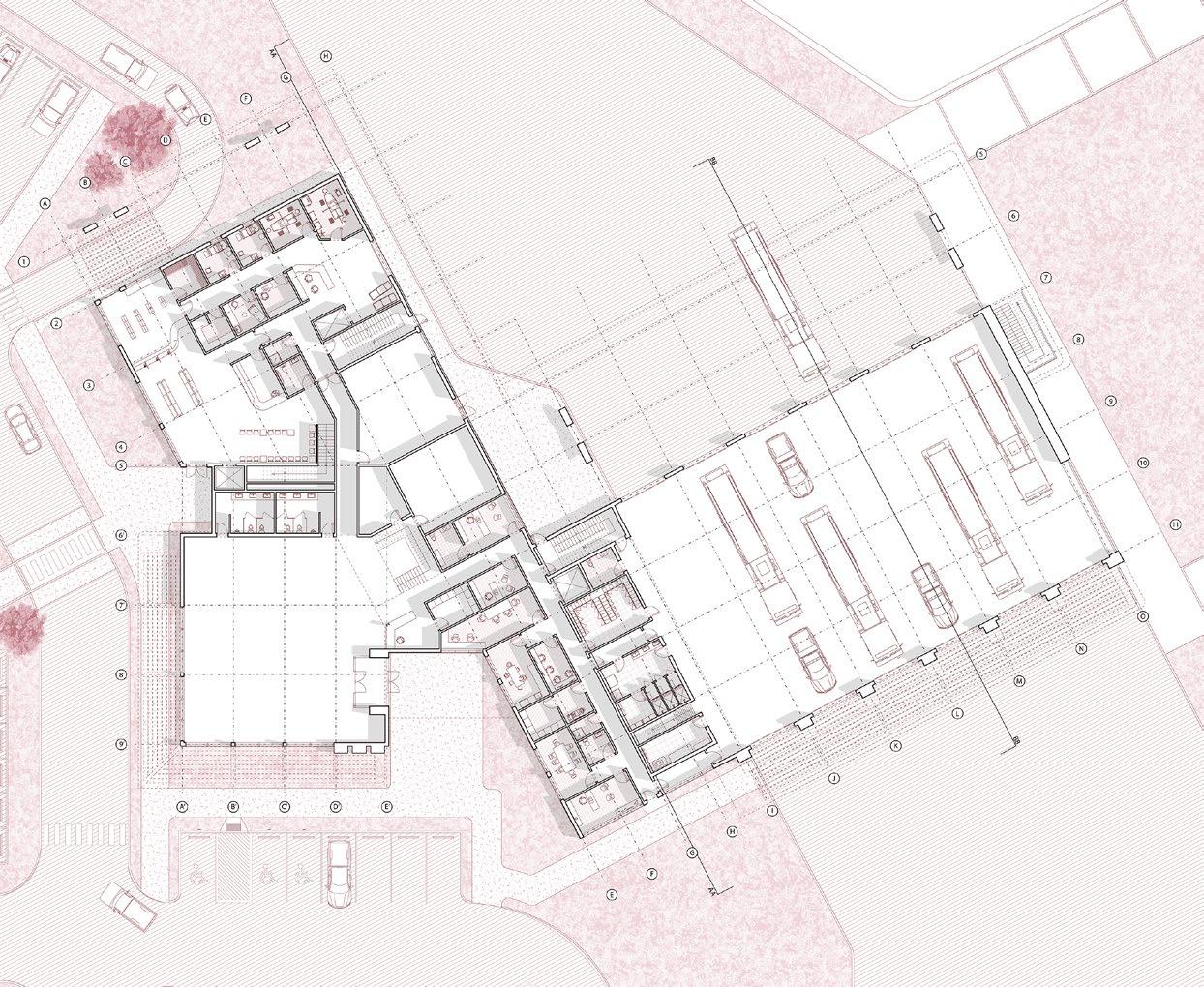


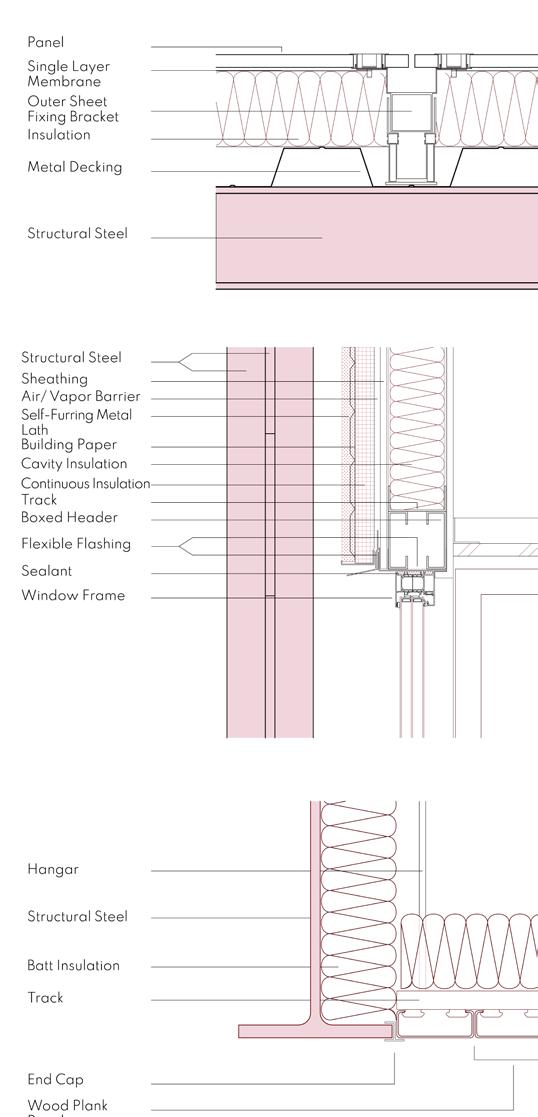


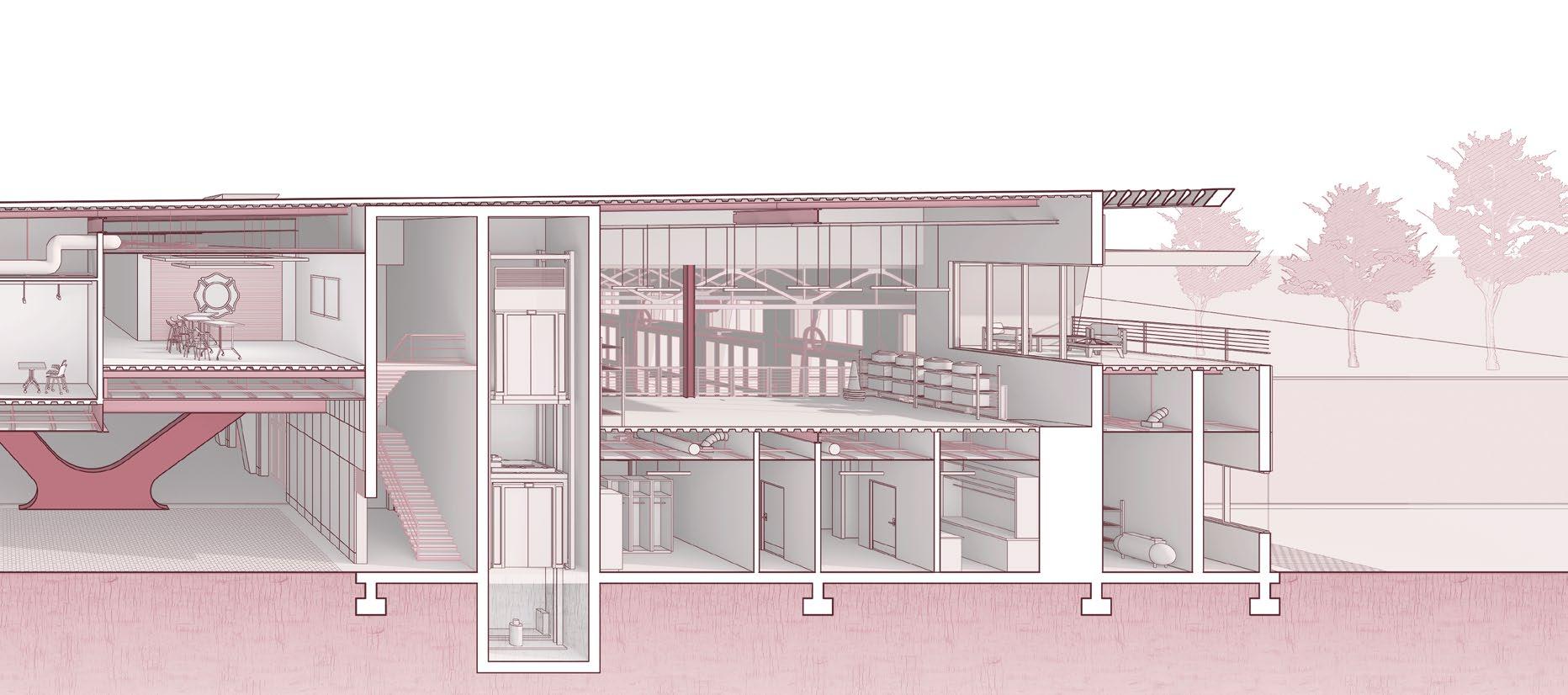
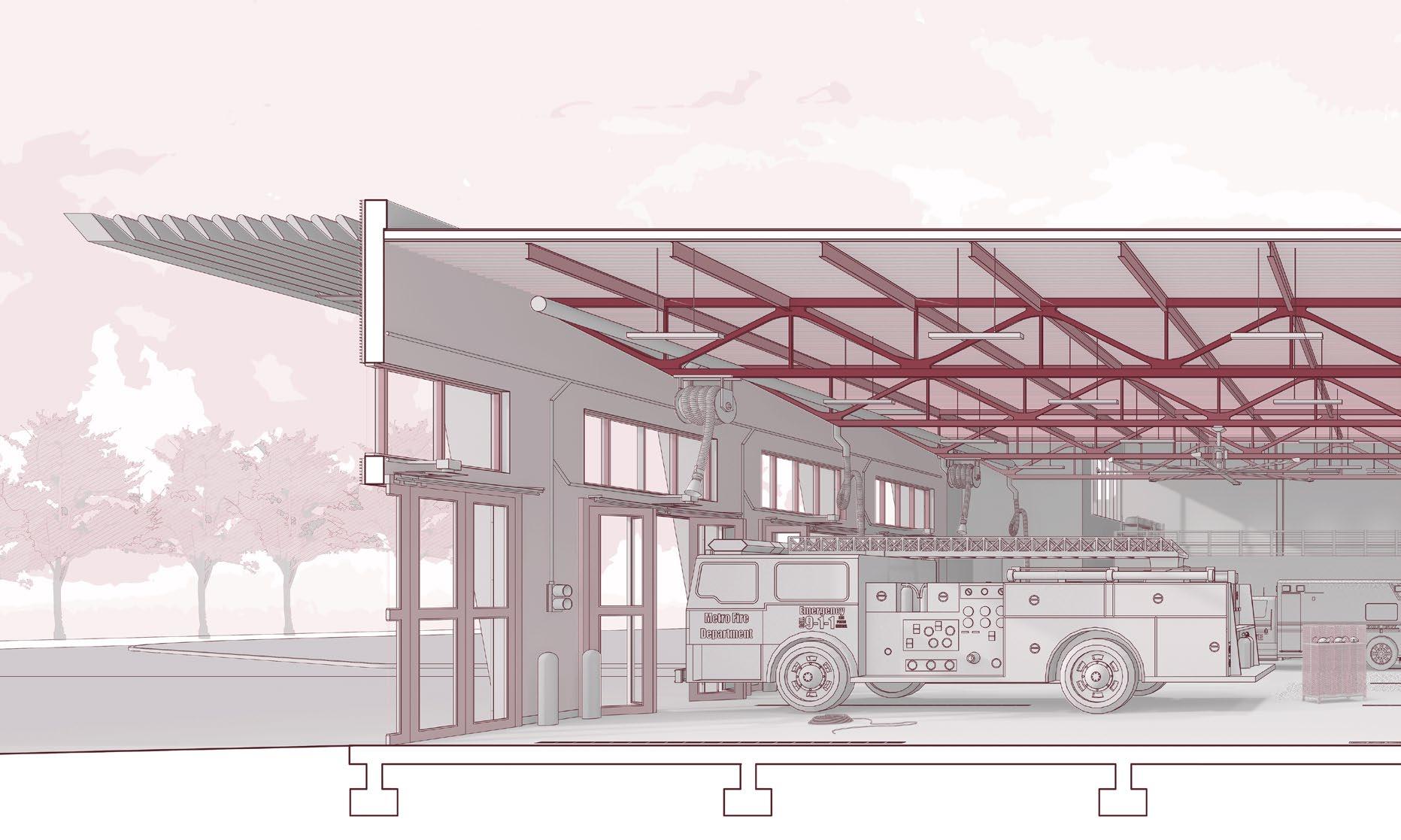


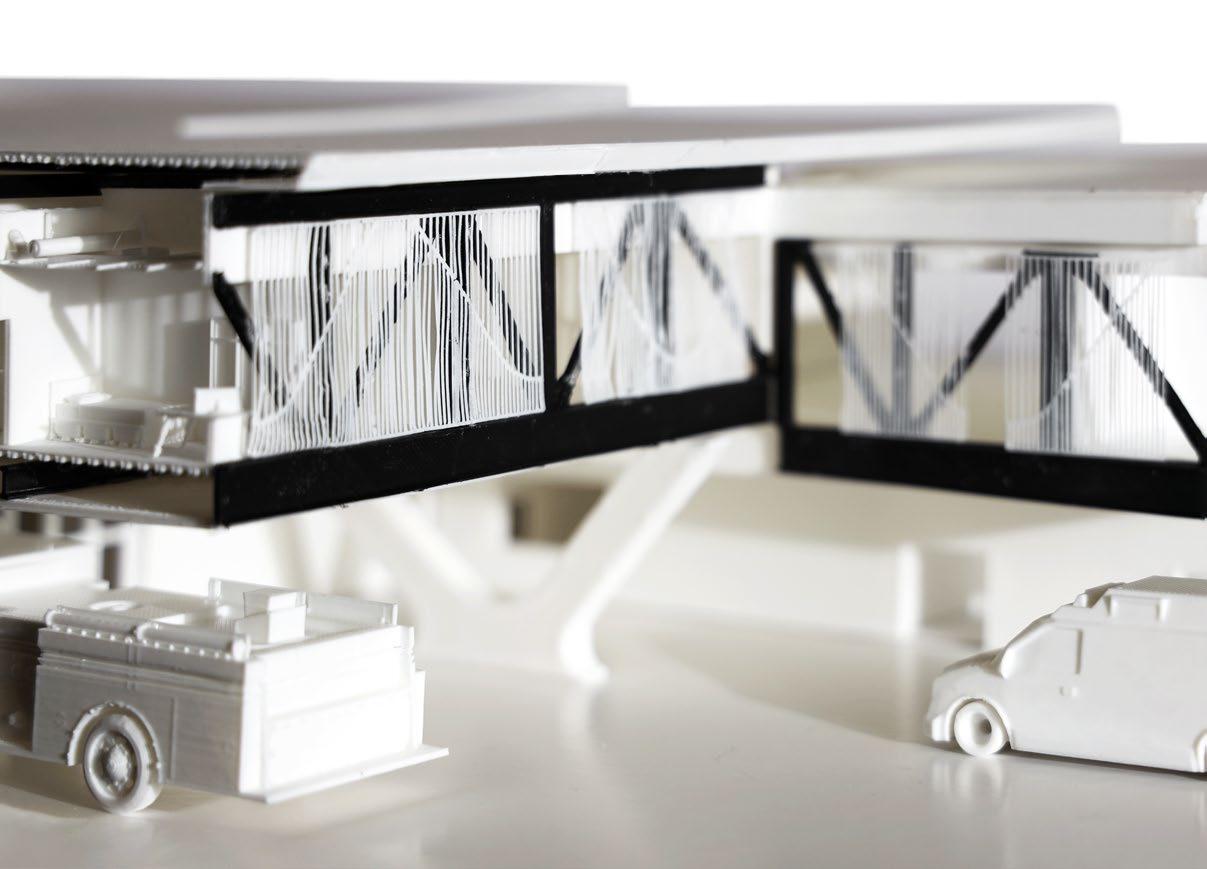
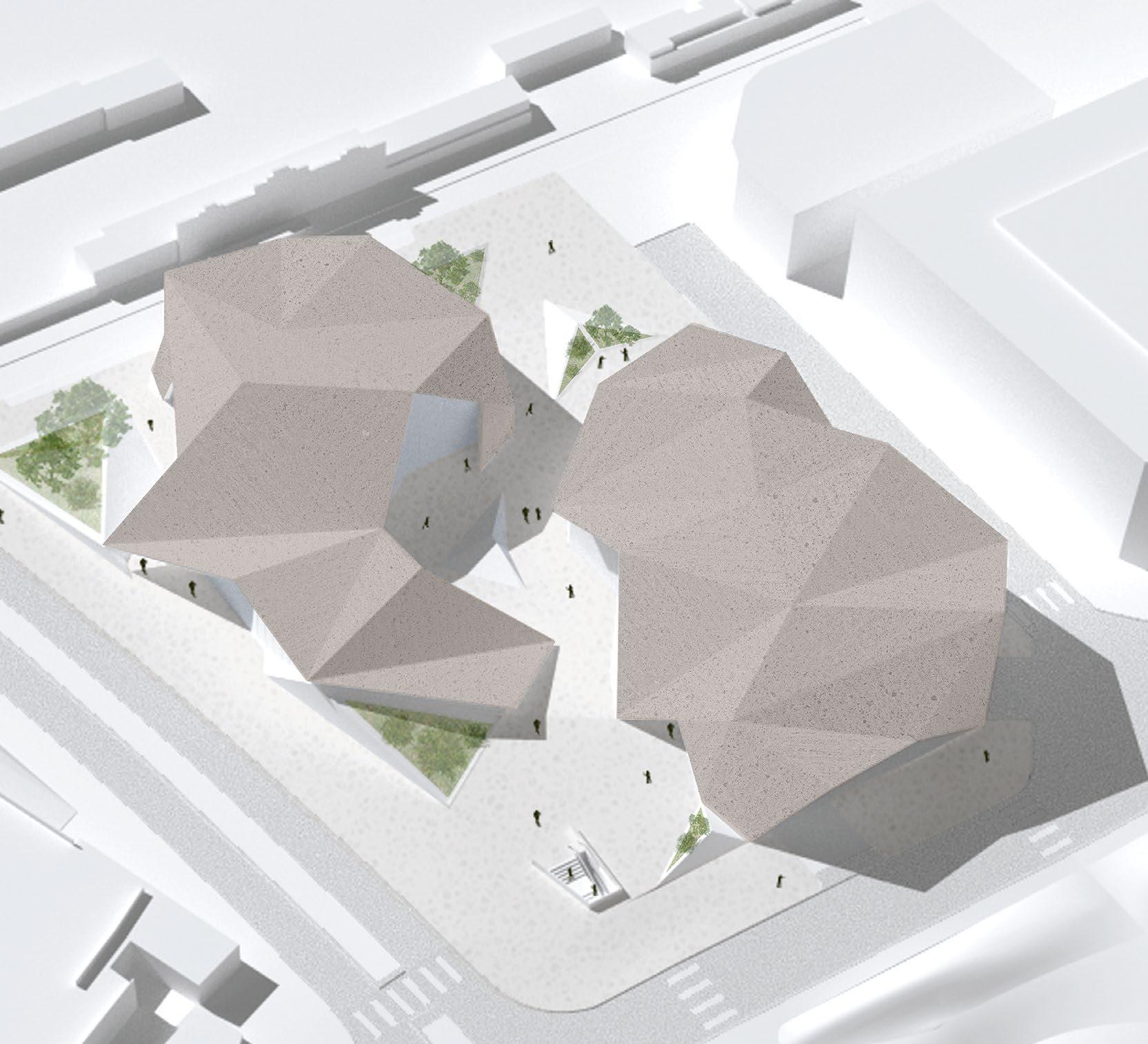
URBAN POCKETS
Professor | Miguel Roldan Team | Patricia RochaThrough the design of urban pockets within our site, our project aims to rewrite the distribution of private, semi private, and public to create a seamless threshold between spaces. In this specific area of Barcelona, the classification of what is private, semi private, and public contradicts the city normality. The Eixample blocks are most commonly organized with public space on the ground floor and private space concentrated above. The building begins to fold from the ground up in a continuous system, creating a shell that extends past the building into the urban pockets. The building acts as the core of the site, and the roof as the connection between landscape and interior program. This creates a connective quality that unifies the pragmatic needs and creates fluid circulation of the shell, the core and everything inbetween.
Contributions | research, design, modeling, drawings, renders, structural design, and section
01.Site Axonometric
02. Exterior courtyard render
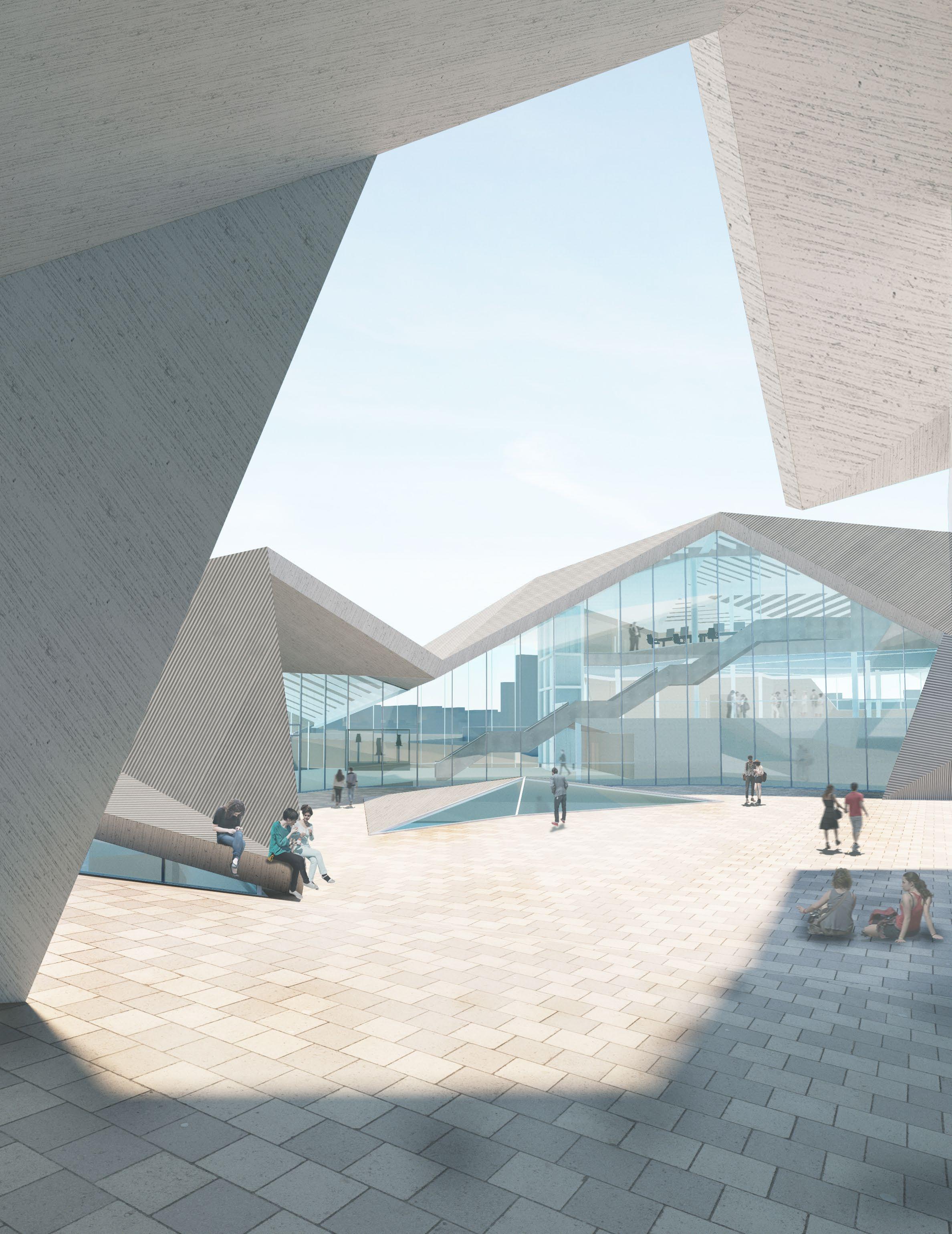

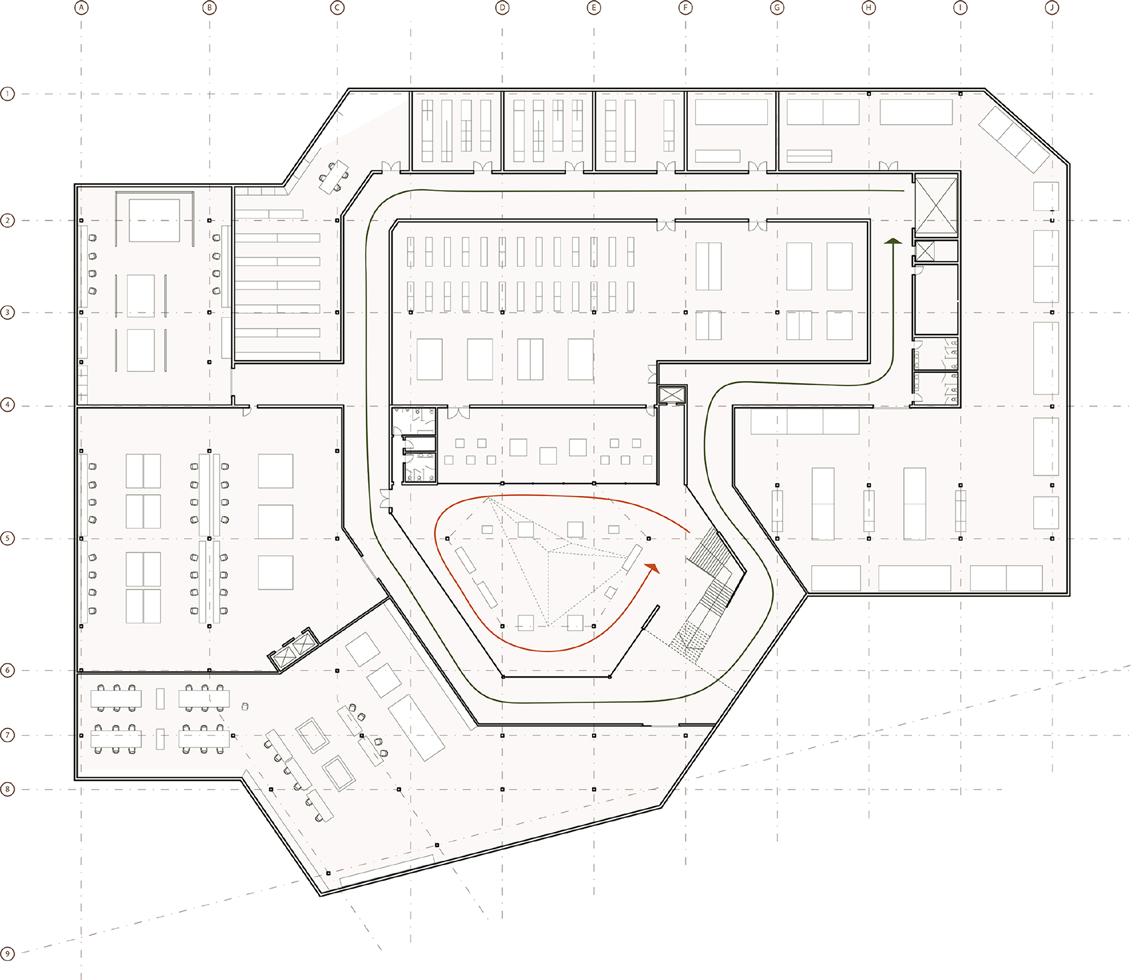
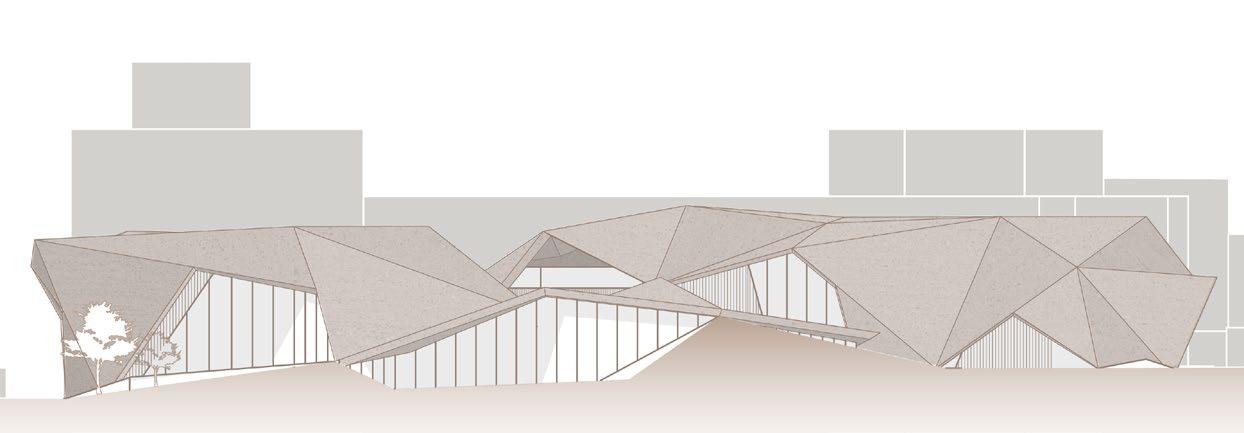



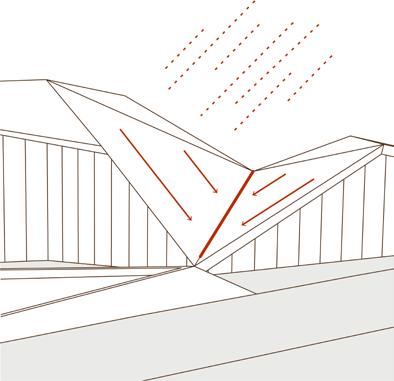
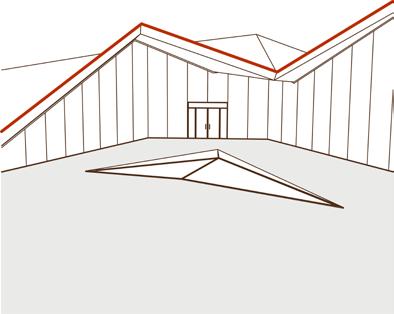
Diagrammatic views to show roof articulation informed by solar path and views of surrounding context.
Roof Articulation also informed by rainwater collection and defining public/private entrances.

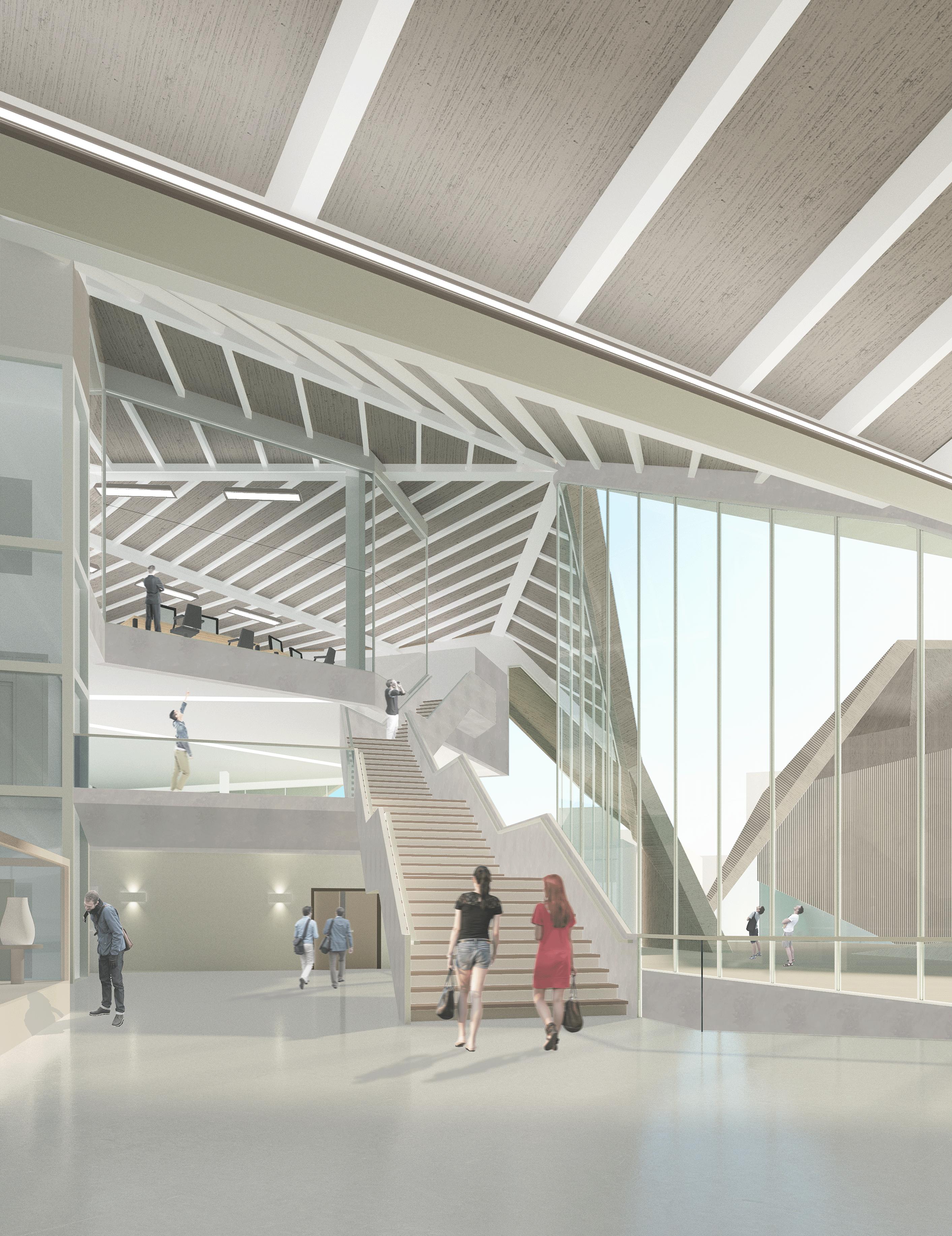

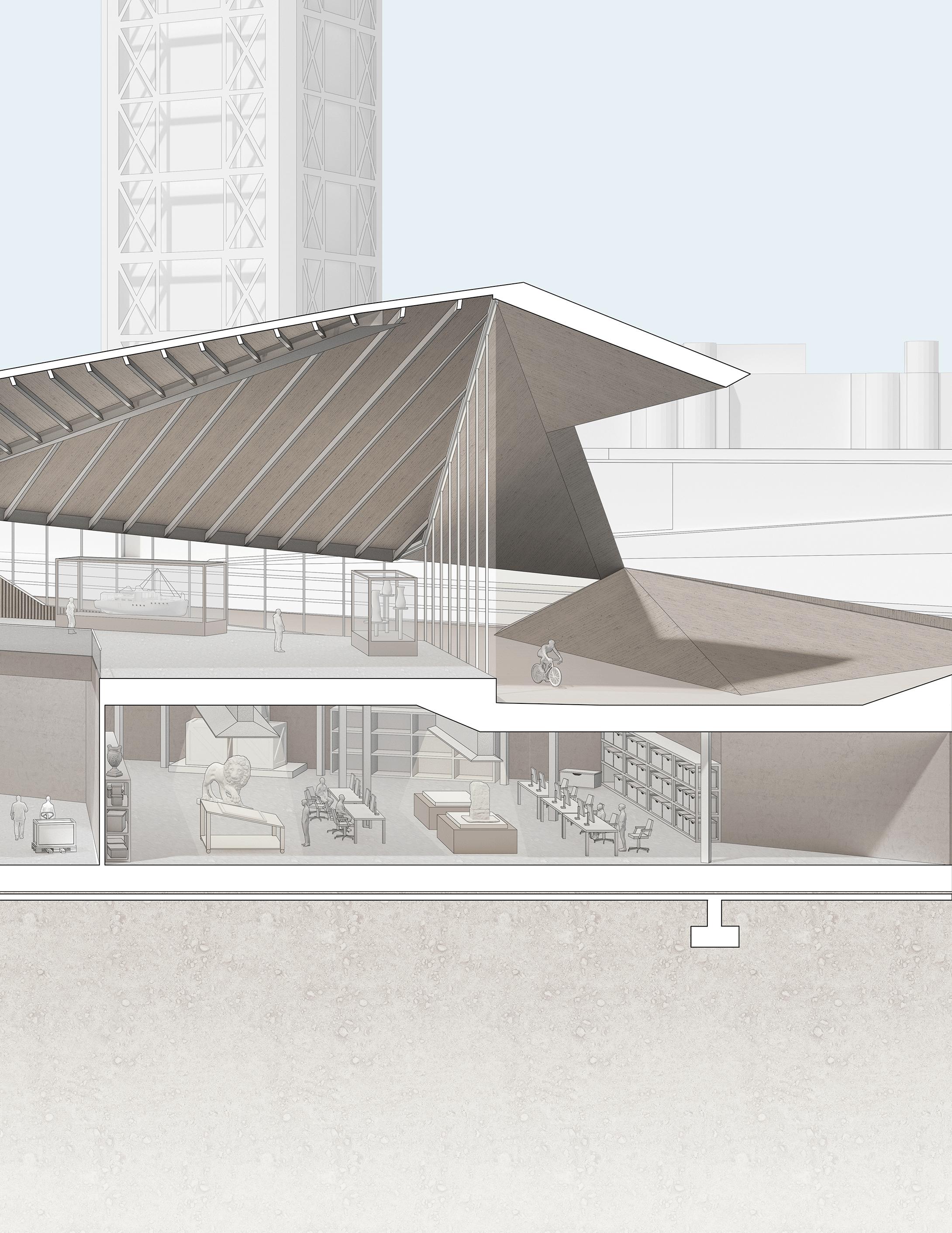
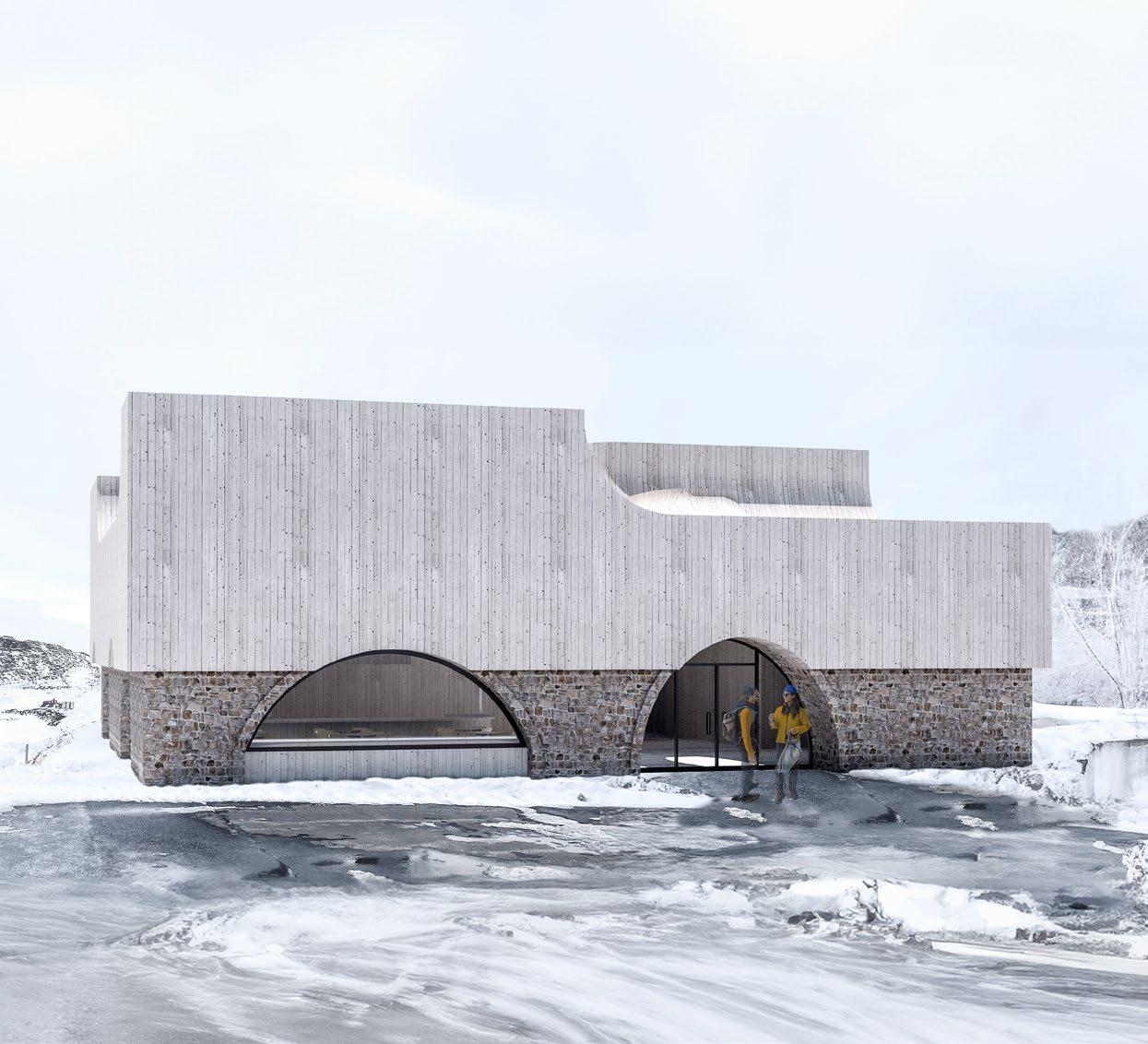
EMERGENCE
Buildner International Design Competition
Team | Nathan Ehrlich & Yao Xiao03
“Emergence“ as an architectural intervention establishes a series of therapeutic spaces that directly draw connections to the existing condition of the site and the Myvatn Lake area. The “ground“ condition of the site stems from the understanding of Icelandic Turf Houses that utilize stone foundations as a method to isolate the moisture from exterior to interior. The “ground“ condition of the craters in the area becomes an important characteristic where the beer spa acts as an extension of the topography, rising up while reflecting the area’s natural landscapes. These two conditions co-exist while creating a clear datum that separates the two: an extension of the foundation that serves as a solid foundation while the undulating roof echos the surrounding Skútustaðagígar craters.
Contributions | research, design, modeling, drawings, and renders


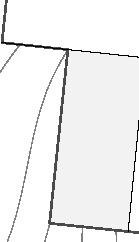
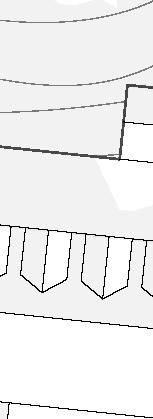






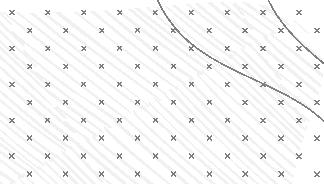

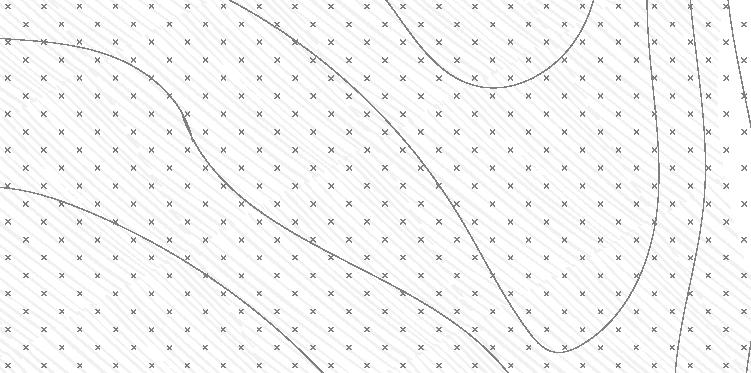
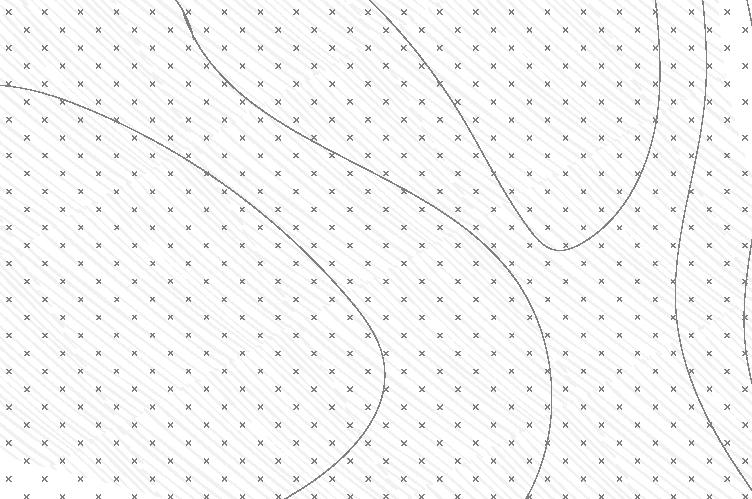






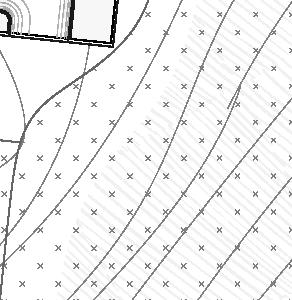
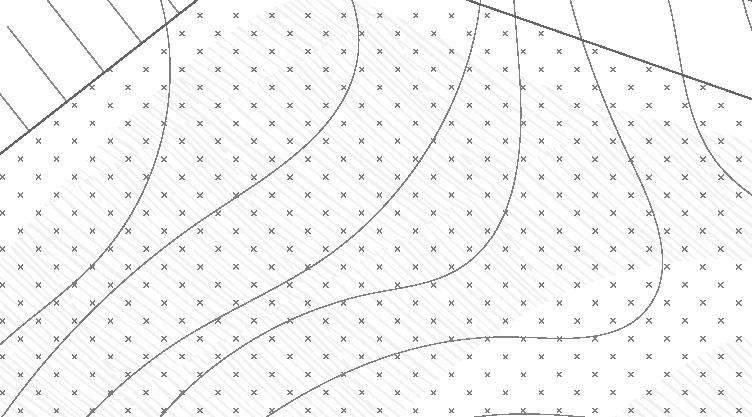


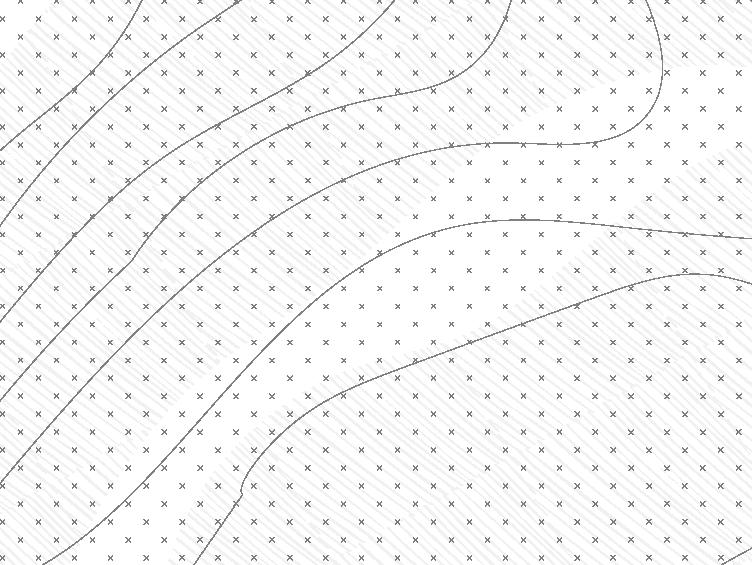


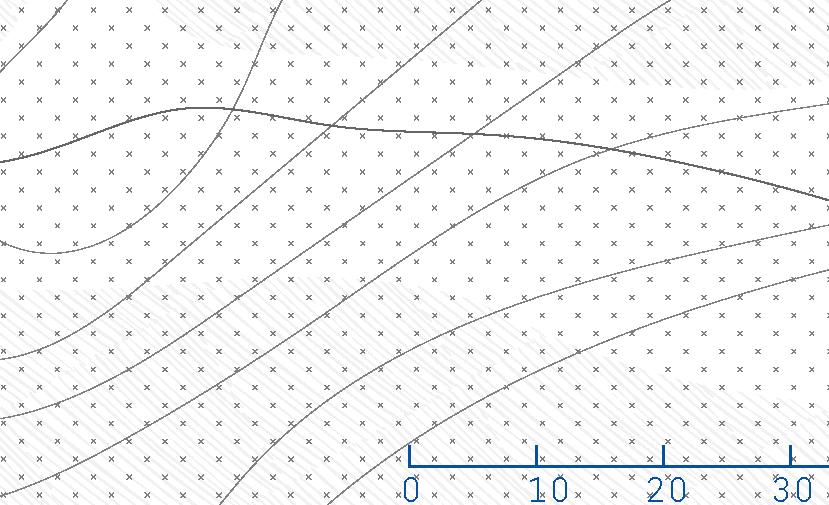

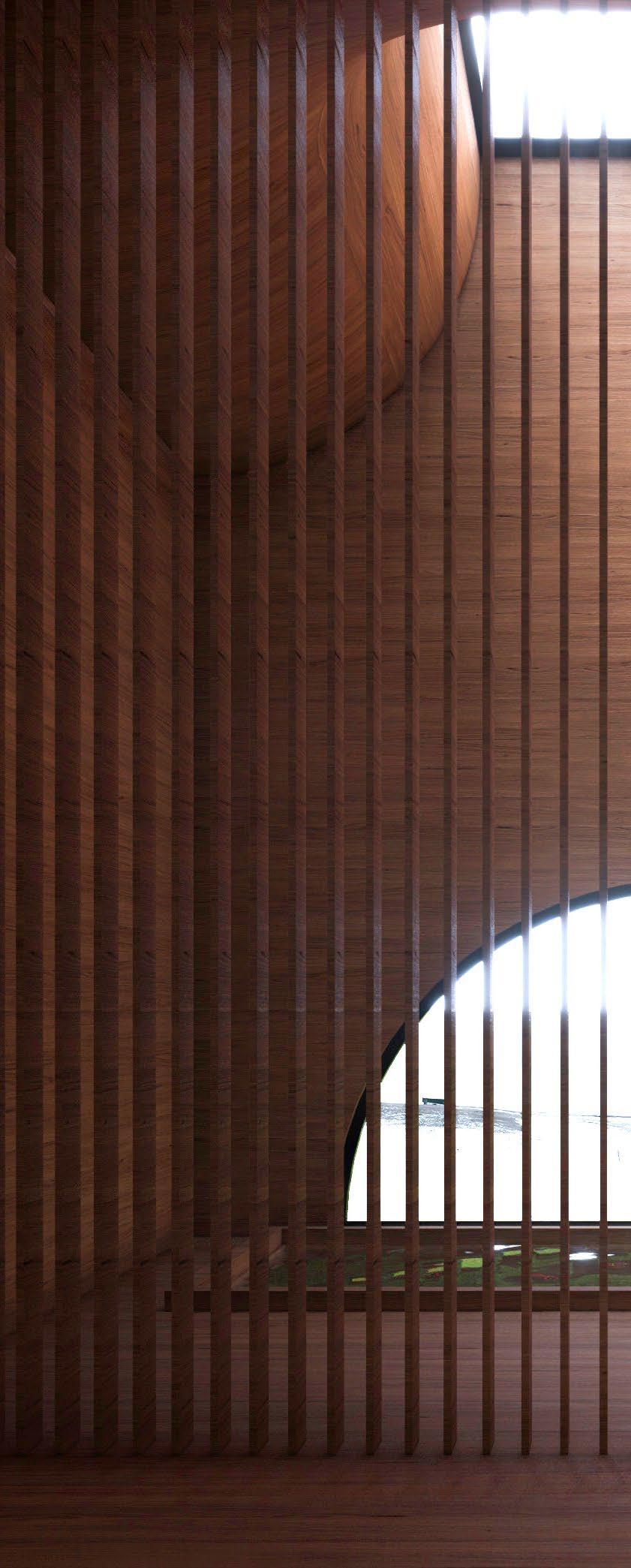
CAFE BATH
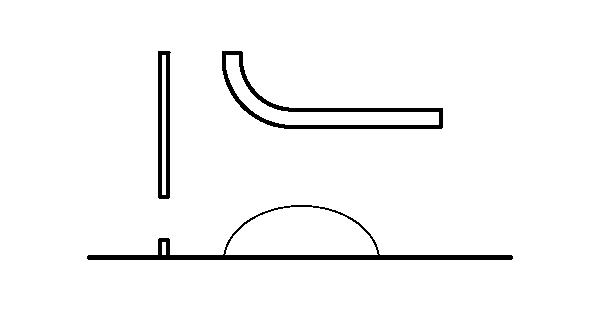
The dining area is illuminated by daylight washing through the skylight and windows.Positioned toward the street, it provides both table and booth seating for hotel guest and those looking for a sojourn from their travels.
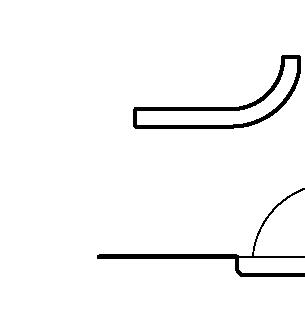
The beer spa module is a therapeutic away from the street and parking. provide options to bathe individually
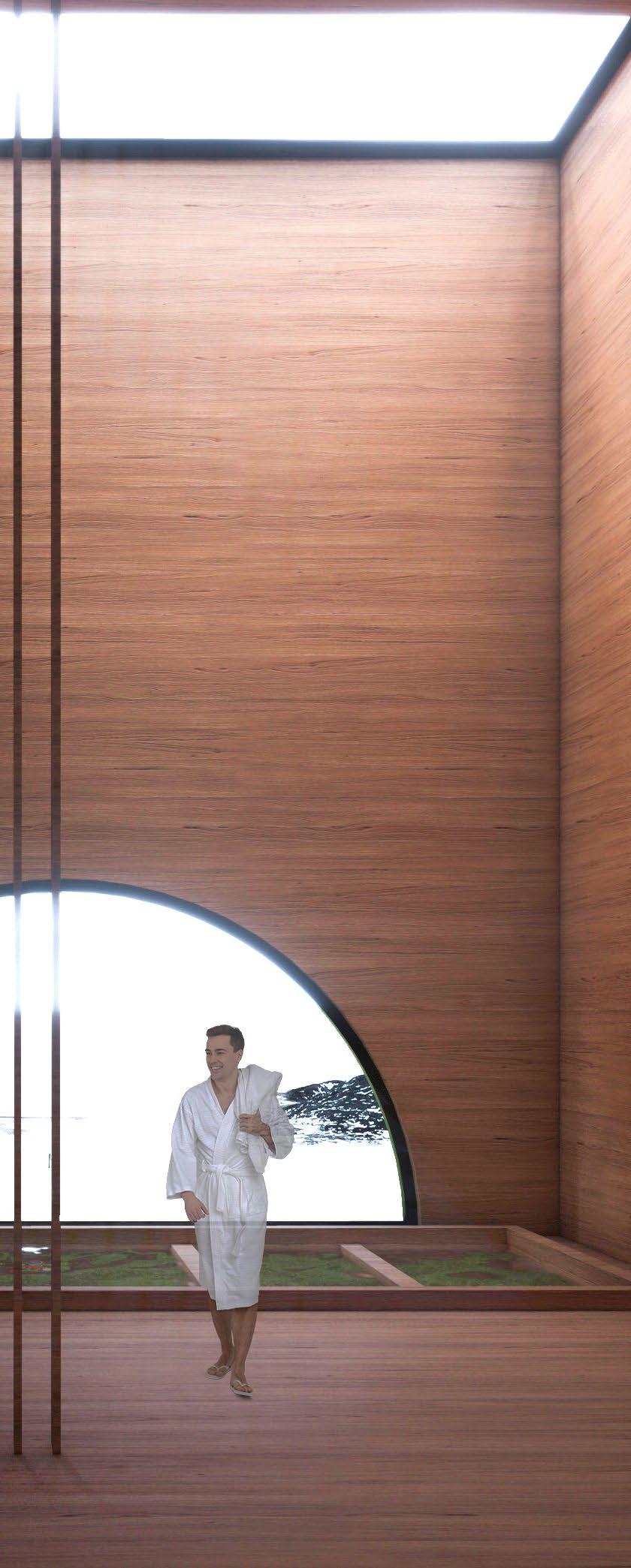
BATH

therapeutic and private space tucked parking. The beer bath soaking tubs individually or in small groups.
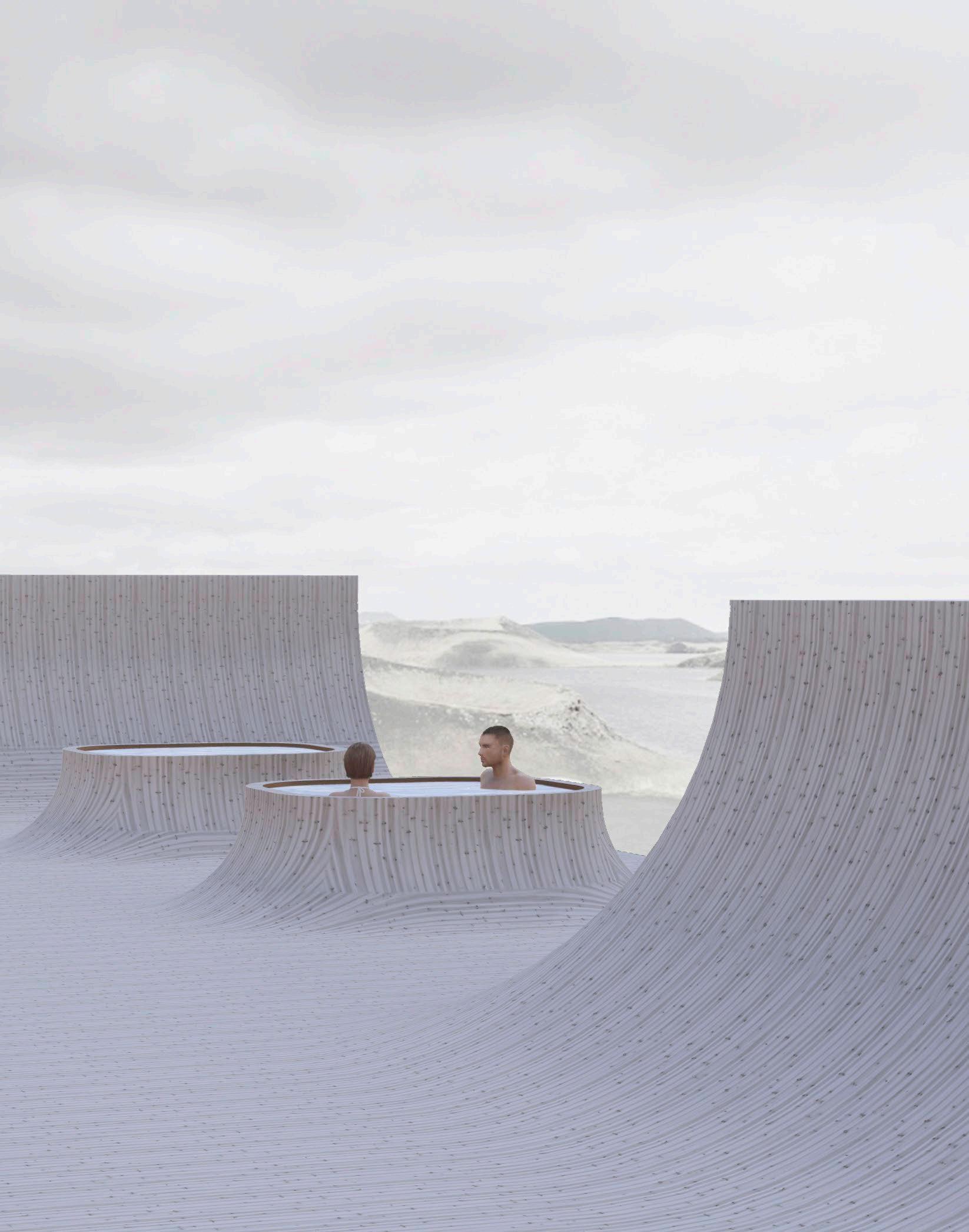
TERRACE

Thearticulationofthegeometryoftherooftopterraceisaresultof the skylights below. The curves mimic and reflect the surrounding landscape of the adjacent craters while acting as frames for outward views.
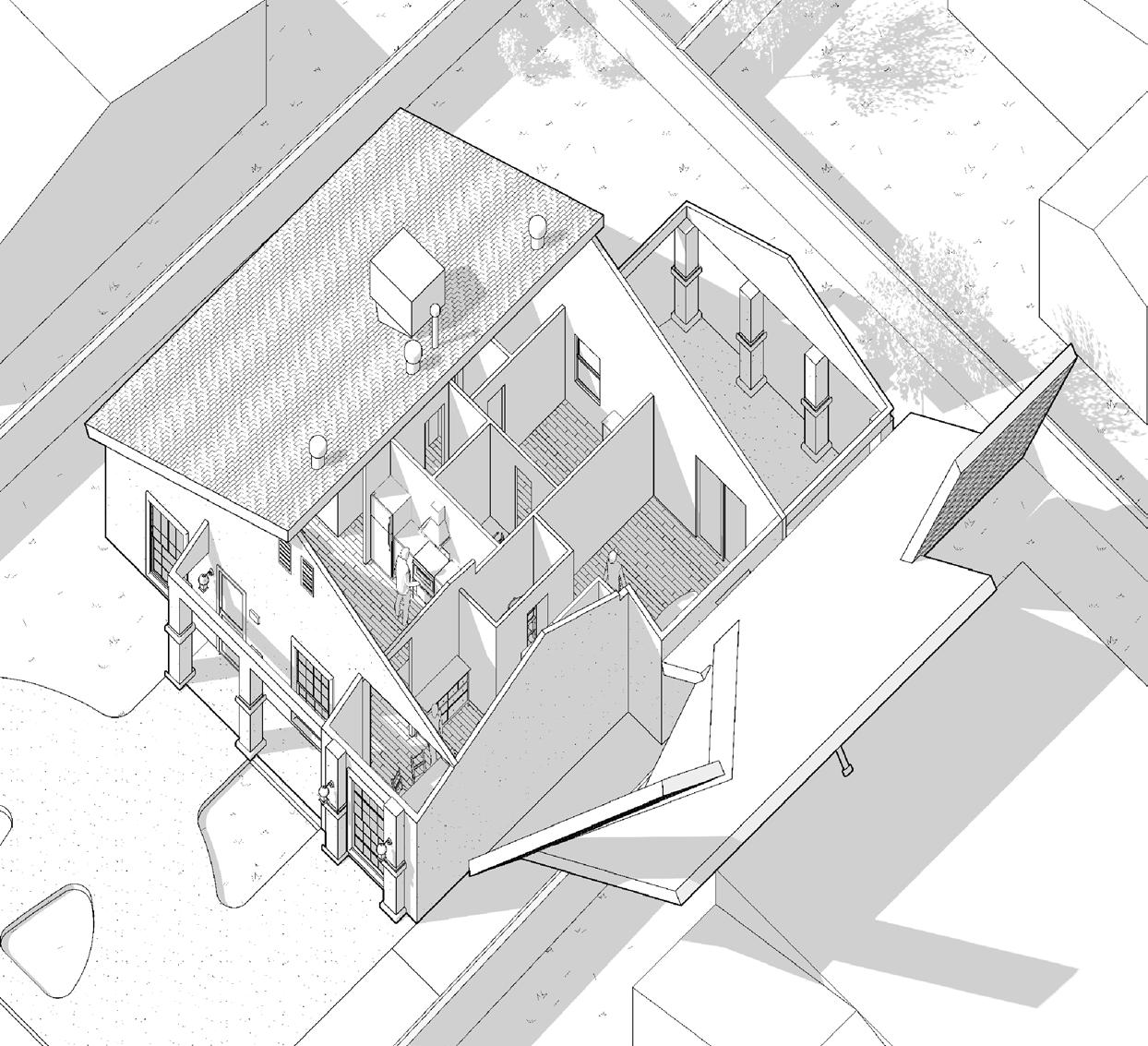
MISSING MIDDLE
Professor | James Michael TateIn a study of vernacular living, a modest home with architectural qualities was selected to analyze and provoke the idea of problematizing the “normal”. In many cases, accessory dwelling units and housing with architectural intention are mutually exclusive. By studying the vernacular project and two precedents, the goal of designing a modest home with architectural attentiveness became obtainable. The ambition of the design was to emphasize the idea of cluster and establish axis through the orientation of porosity. While the accessory dwelling unit is a radical addition to the home, its relationship with the existing home and interior represent the coexistence of affordable housing and design with architectural notion.
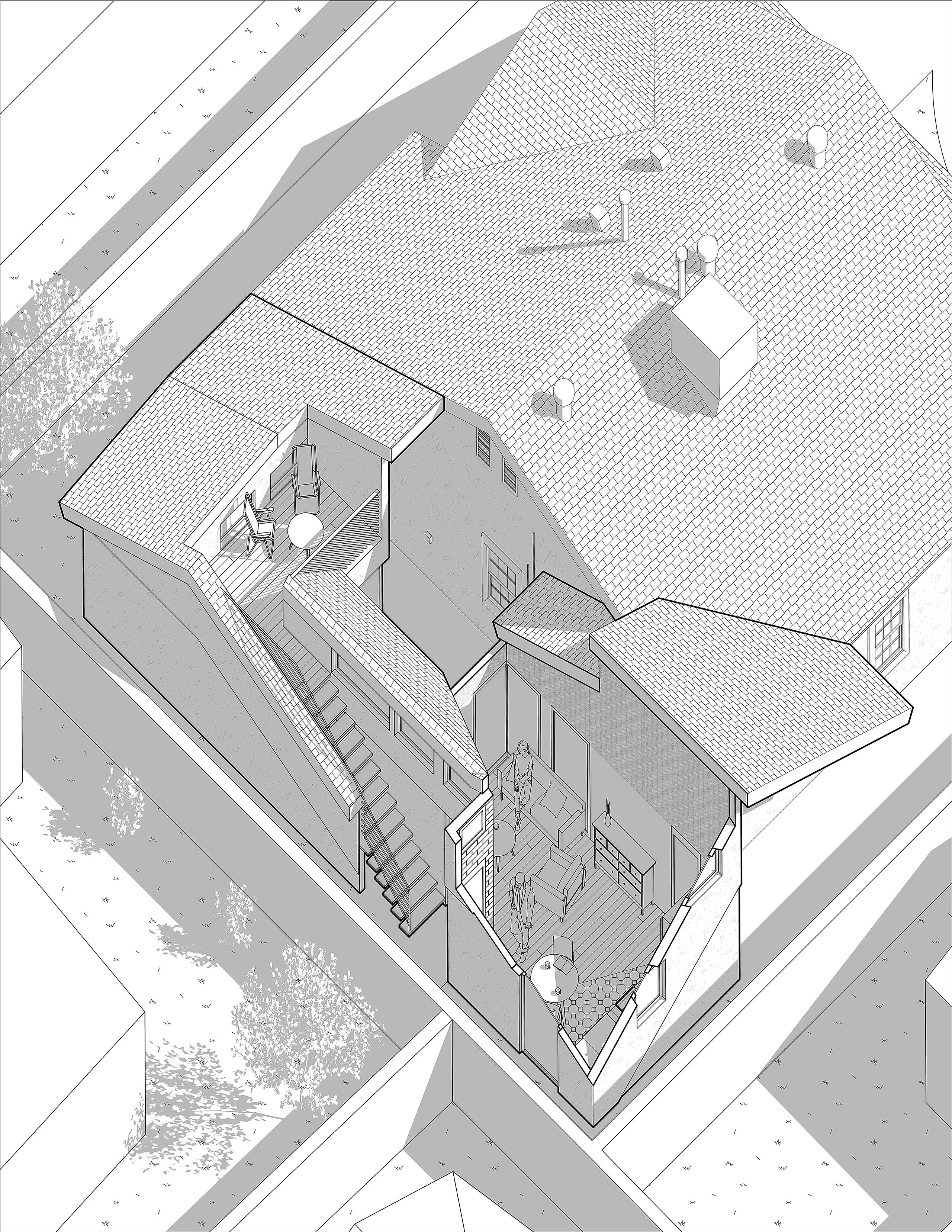
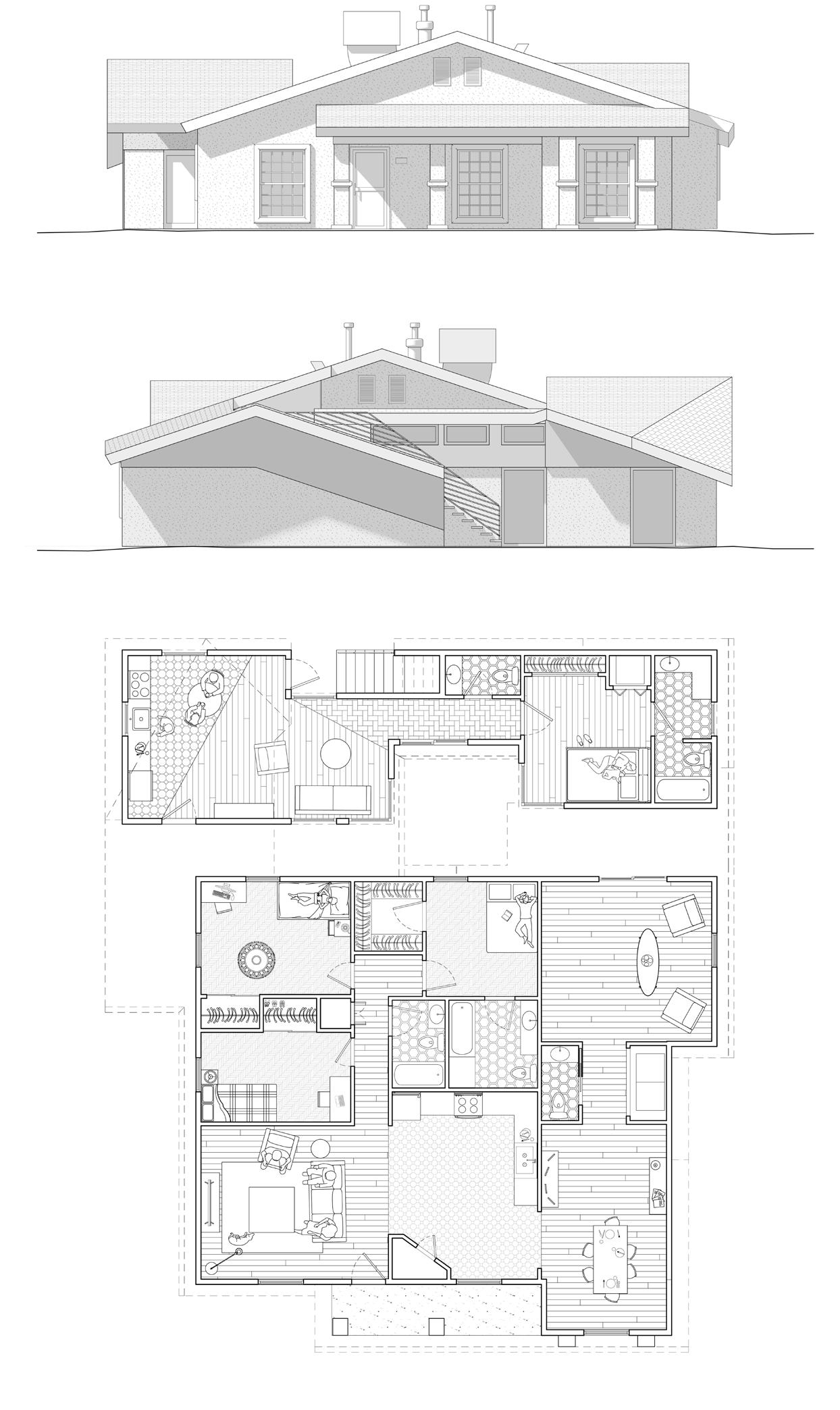

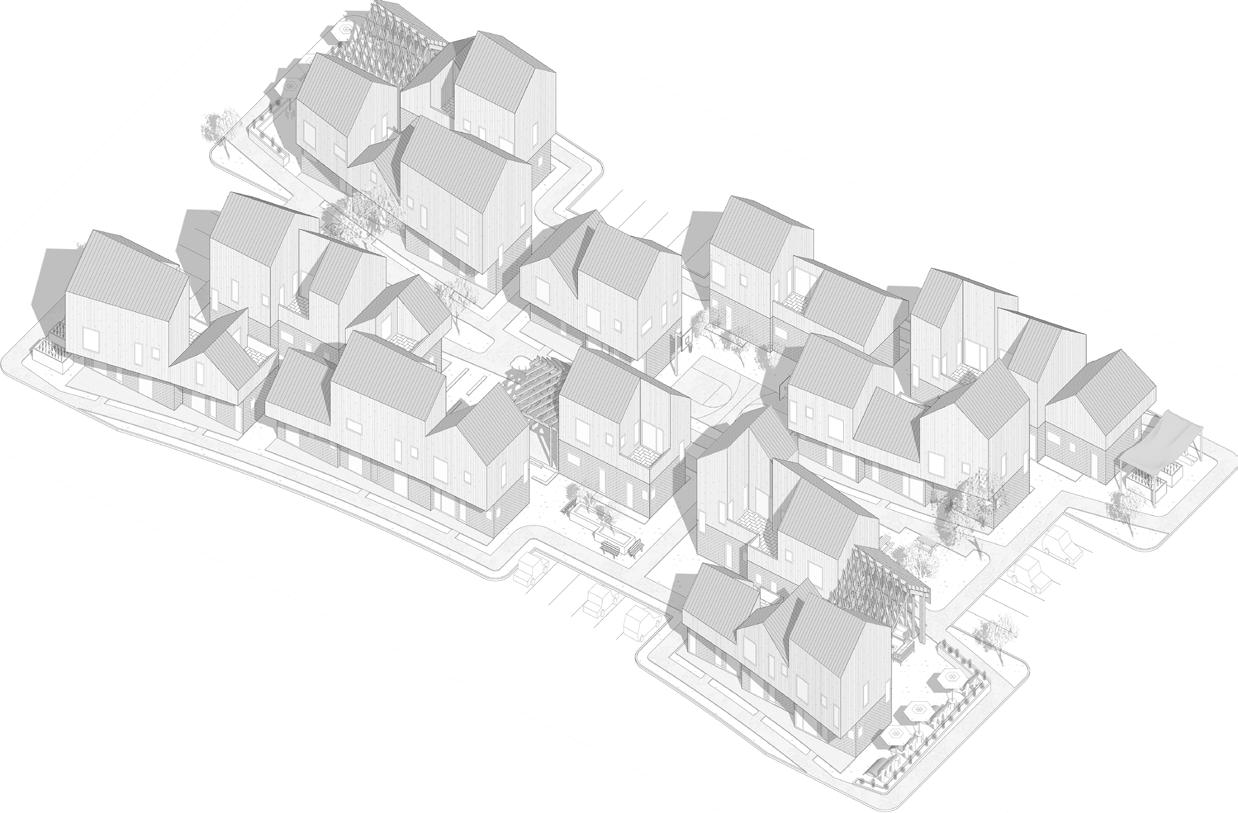
NEW MIDDLES
Professor | James Michael Tate05
This project investigates works toward an alternative to single family detached housing in a 2-acre neighborhood block. Design responses and architectural provocation were produced by the combination of formal and vernacular studies. By using both single family dwellings and multi-unit precedents, the design is able to address the needs of the residents at multiple scales. The workflow consisted of frequent alternation between the entire 2 acre-block, groupings of 3-5 units, and the articulation and assembly at the single unit scale. In the New Middles proposal, the primary goal was to utilize curvilinear datums and the clustering of units to create a variety of shared spaces at different scales. The proposal also problematizes the coexistence of individuality and continuity within the silhouette and profile of the elevation.
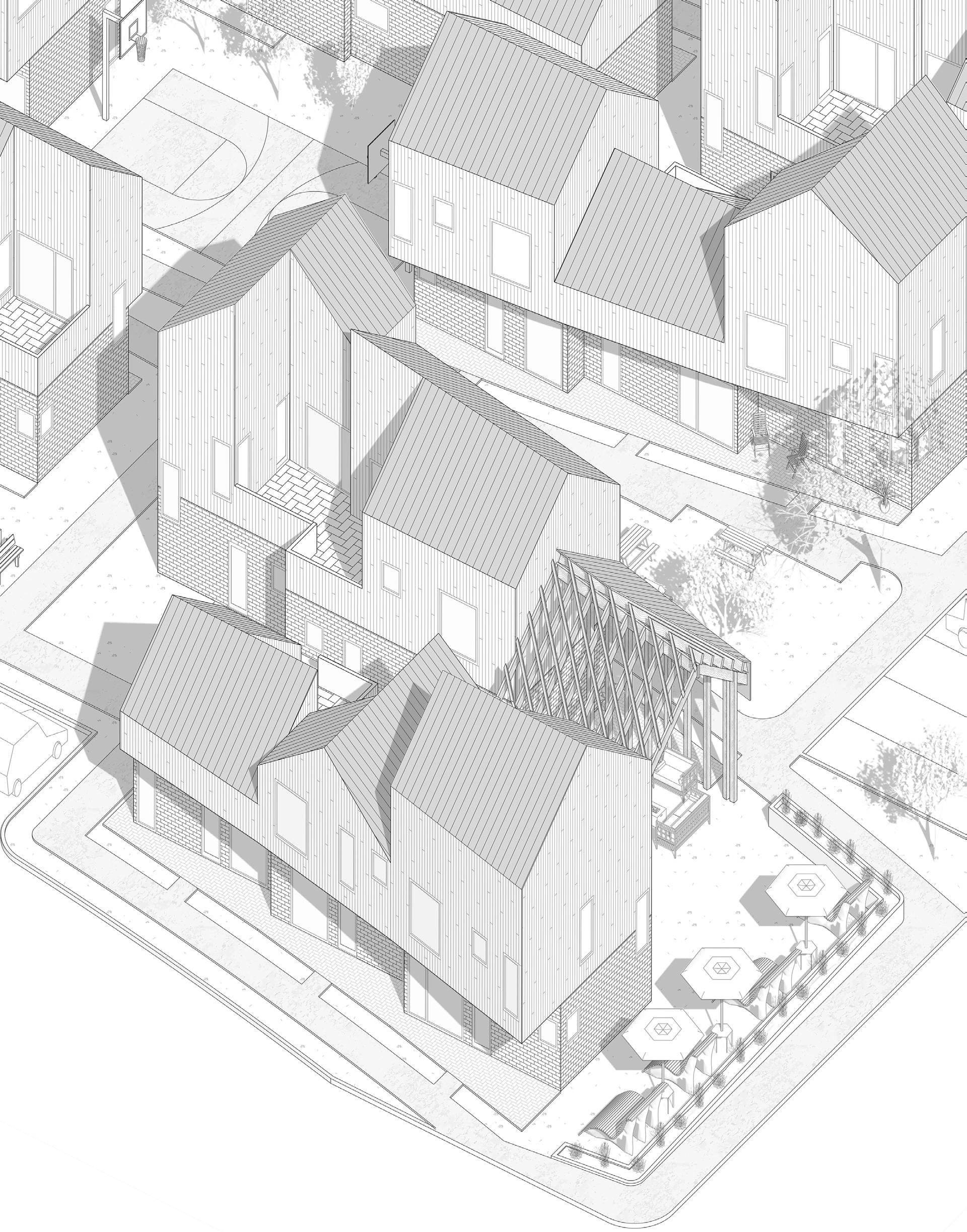

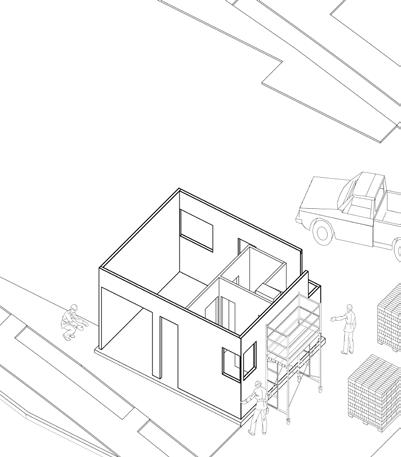

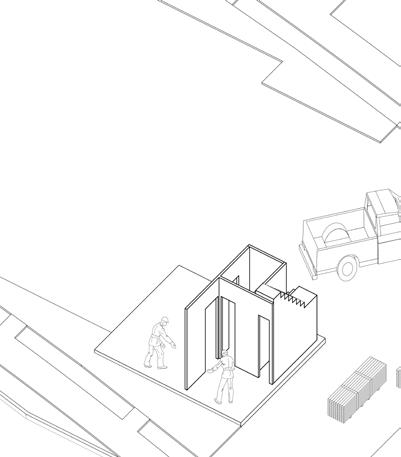


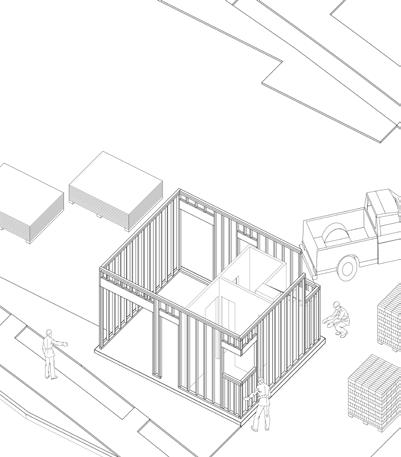
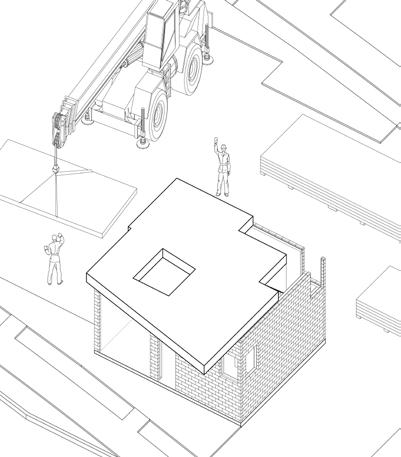
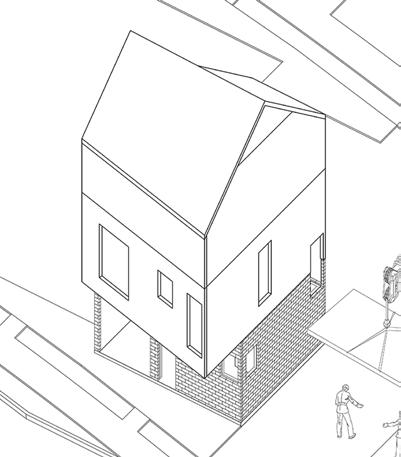
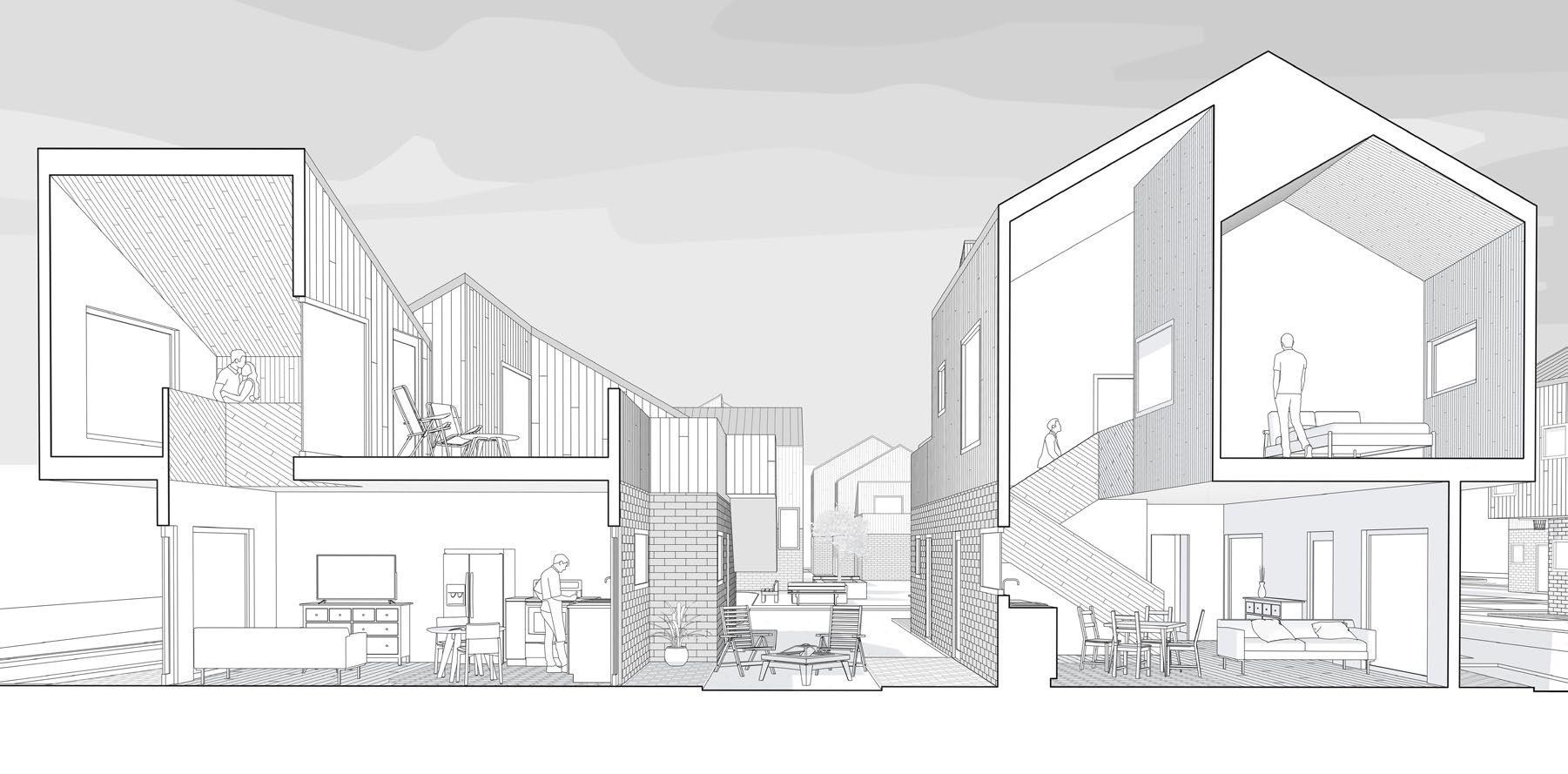
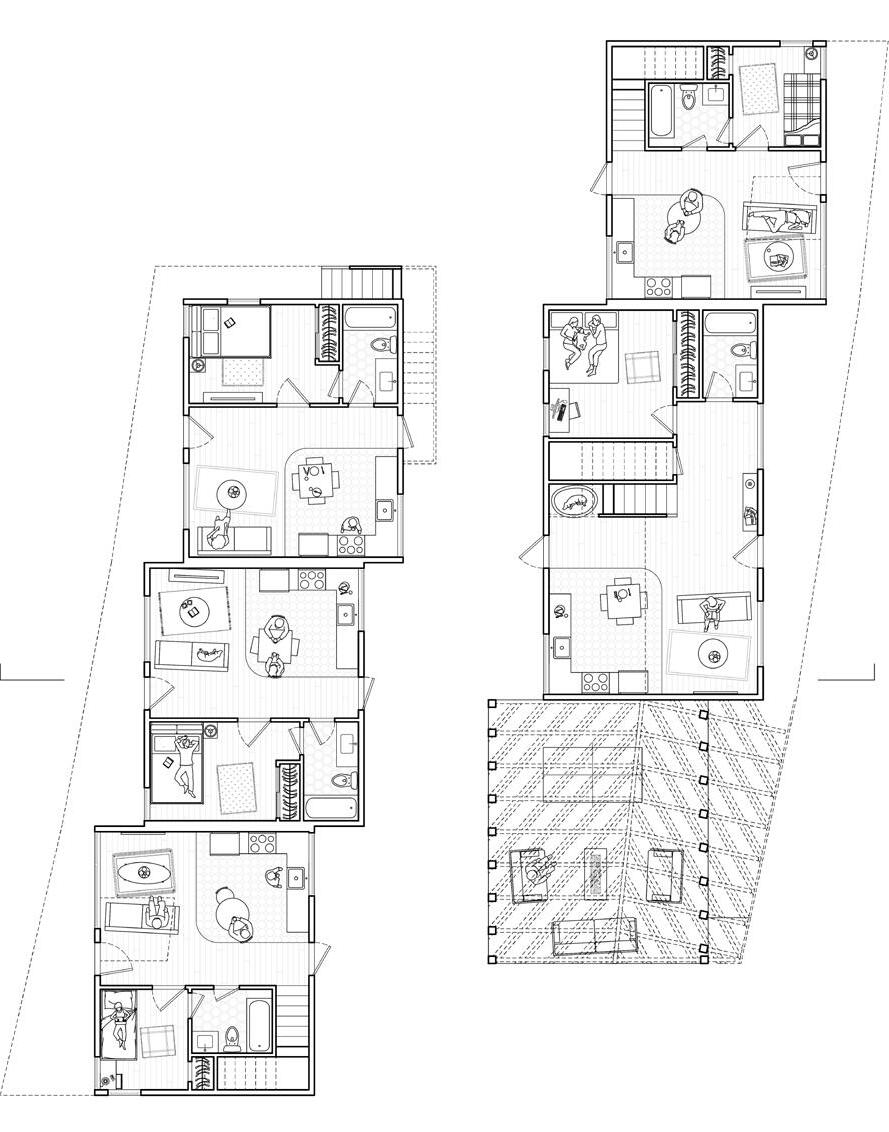
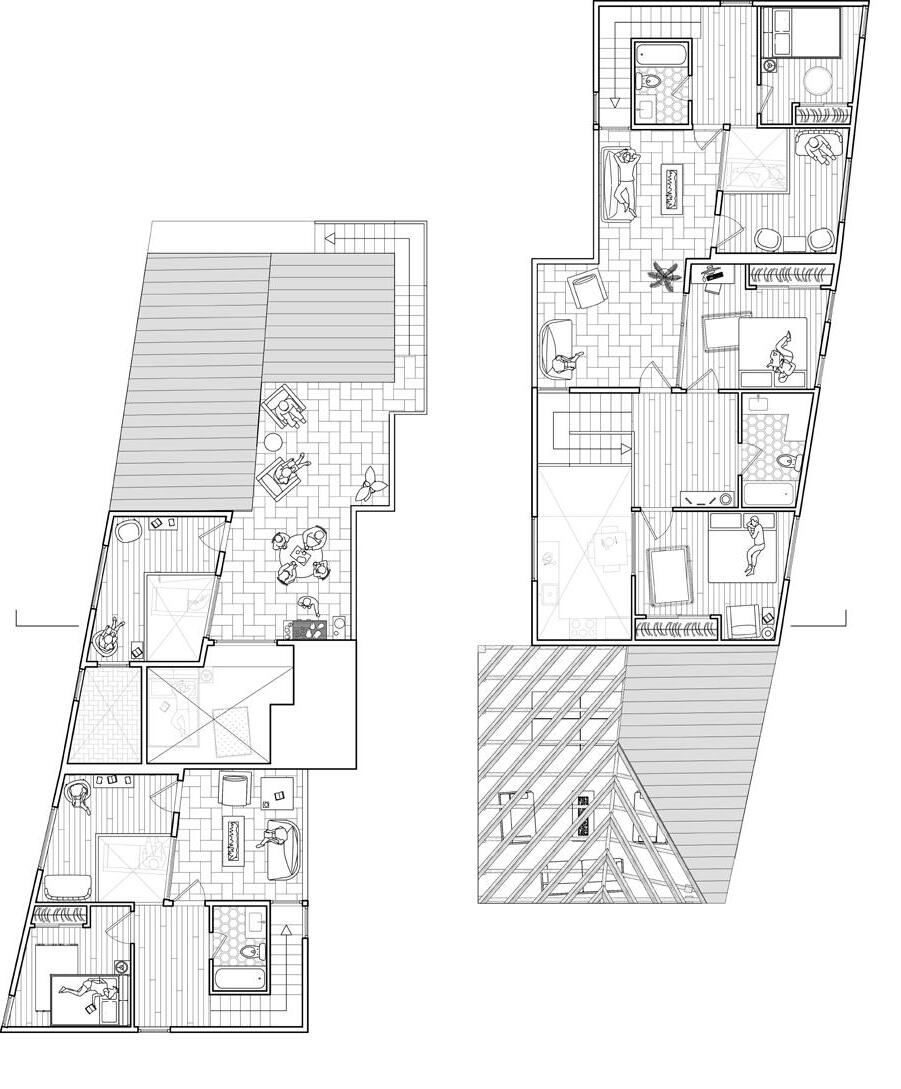


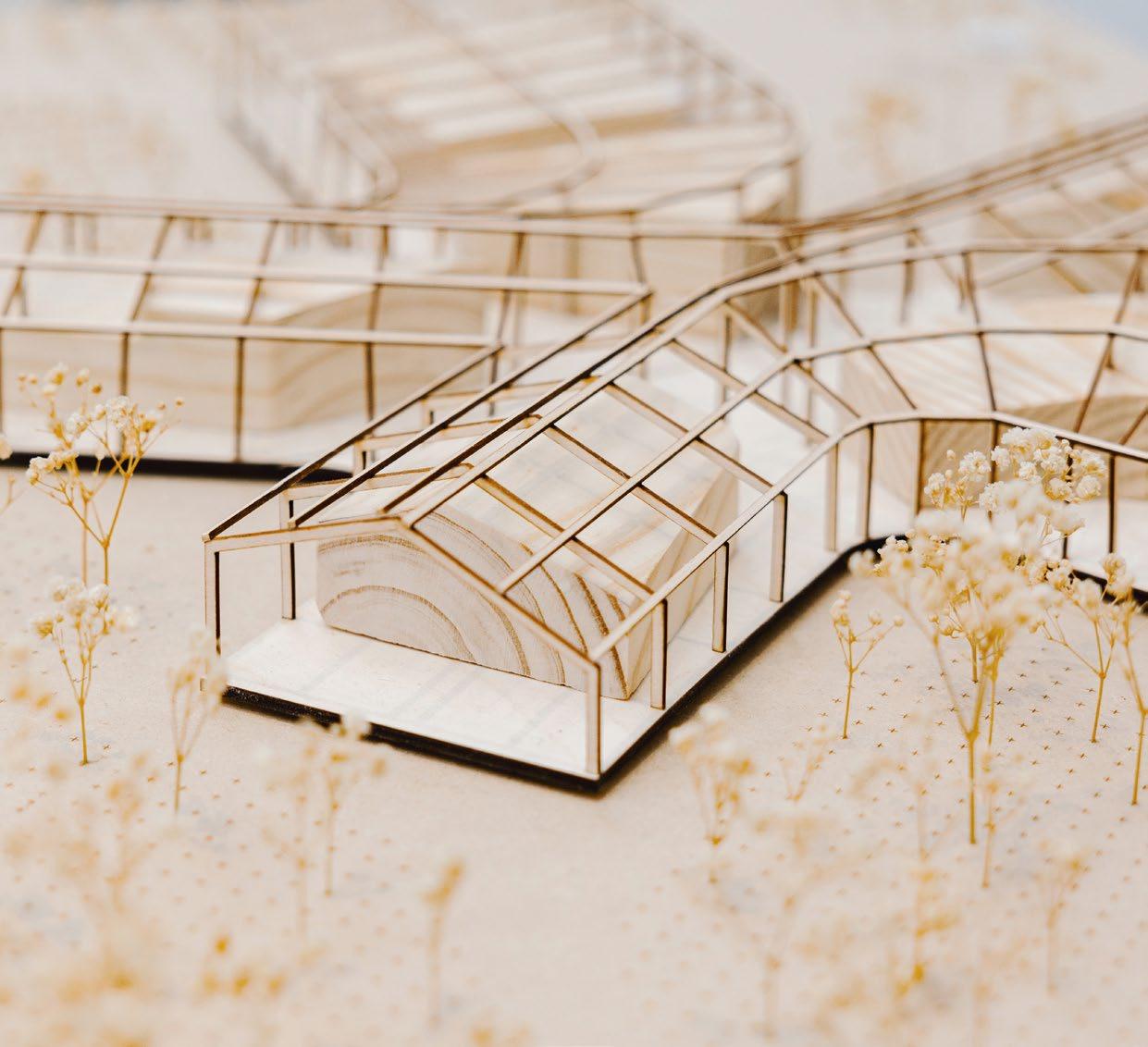
COLLABORATORIUM
Professor | Zhicheng Xu06
Located in Houston’s Sunnyside Neighborhood, Collaboratorium explores the potential of reimagining the conventional steel framing greenhouse typology to accommodate a shared space between urban farm production, education, and community programs. The contextual response creates a series of “Nooks” as the farm branches out, serving as flexible areas that can be used for outdoor workshops, farmers’ markets, community events, and production. By reimagining the traditional greenhouse typology, the project employs “low-tech” materials to support the concept of incremental evolution. The materials and construction approach serve as a means to foster a sense of resident ownership, encouraging ongoing engagement with the building’s development and further strengthening a sense of community.


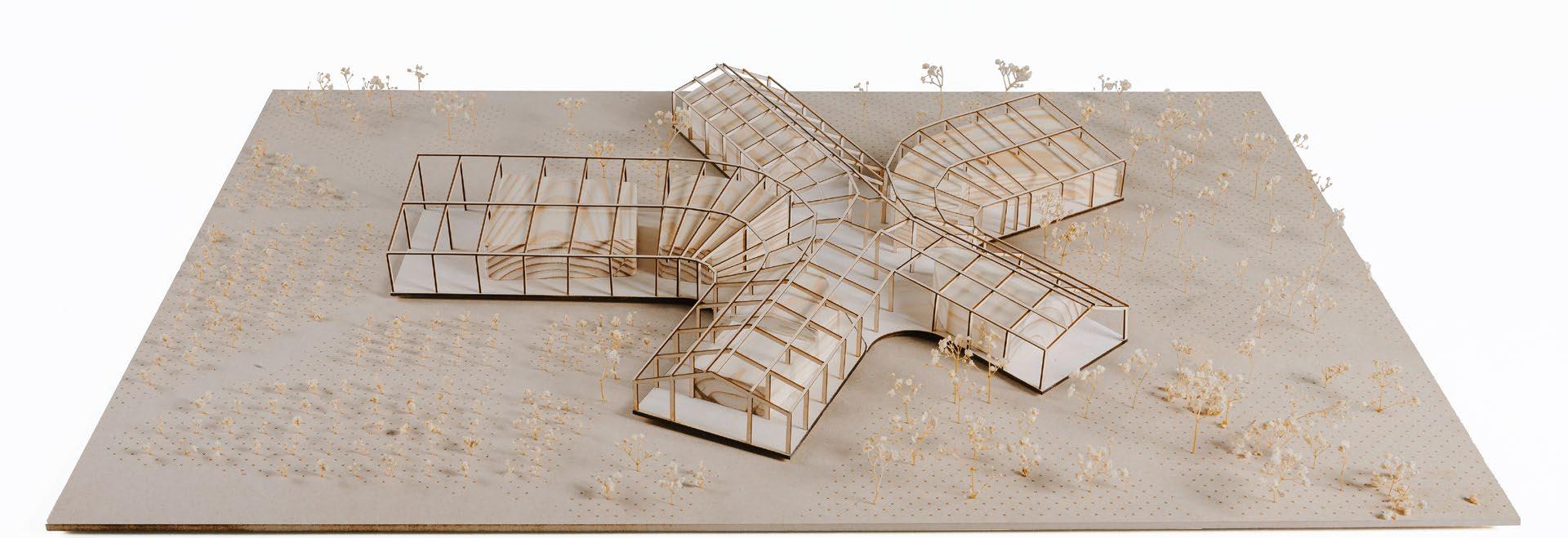
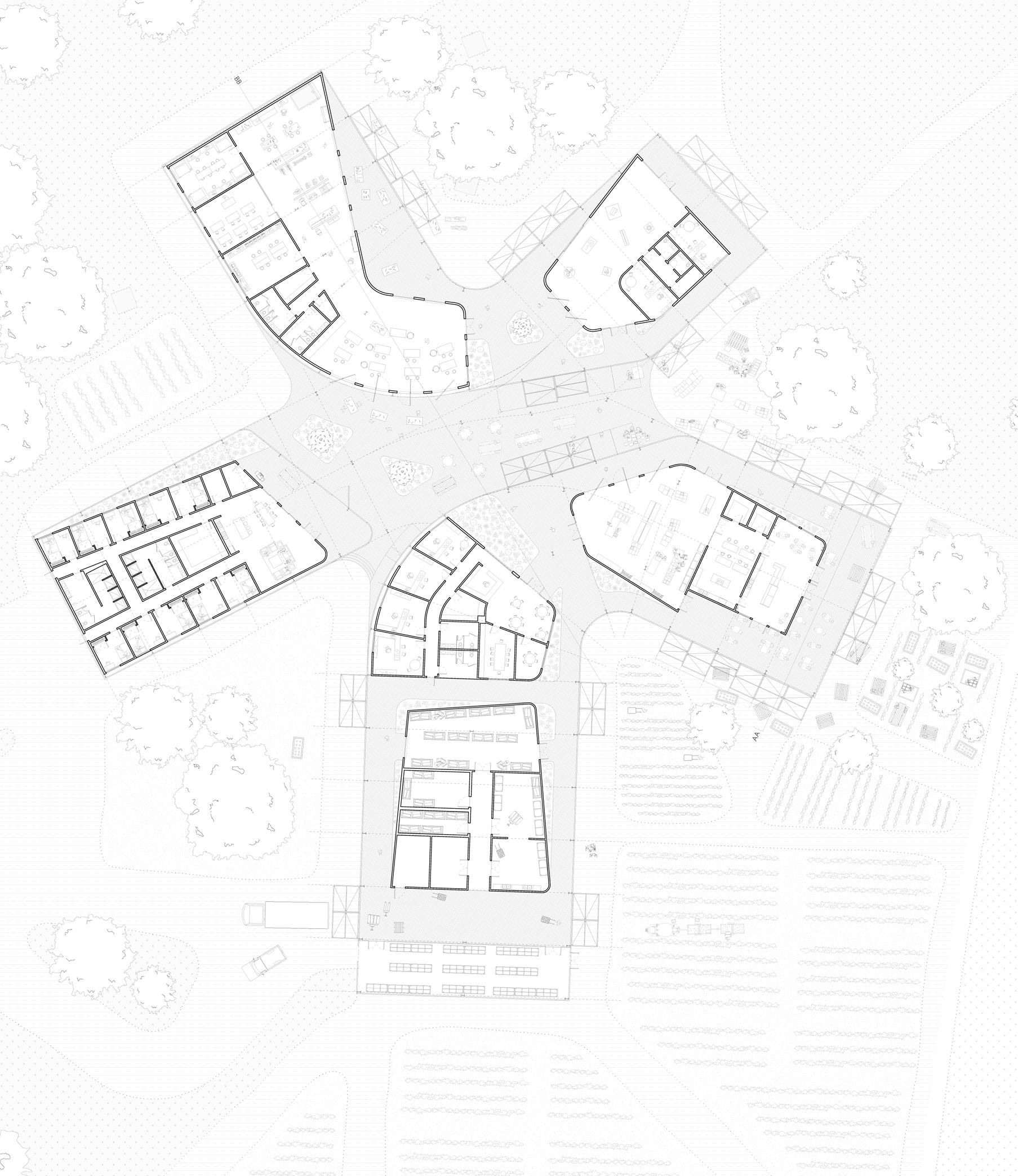
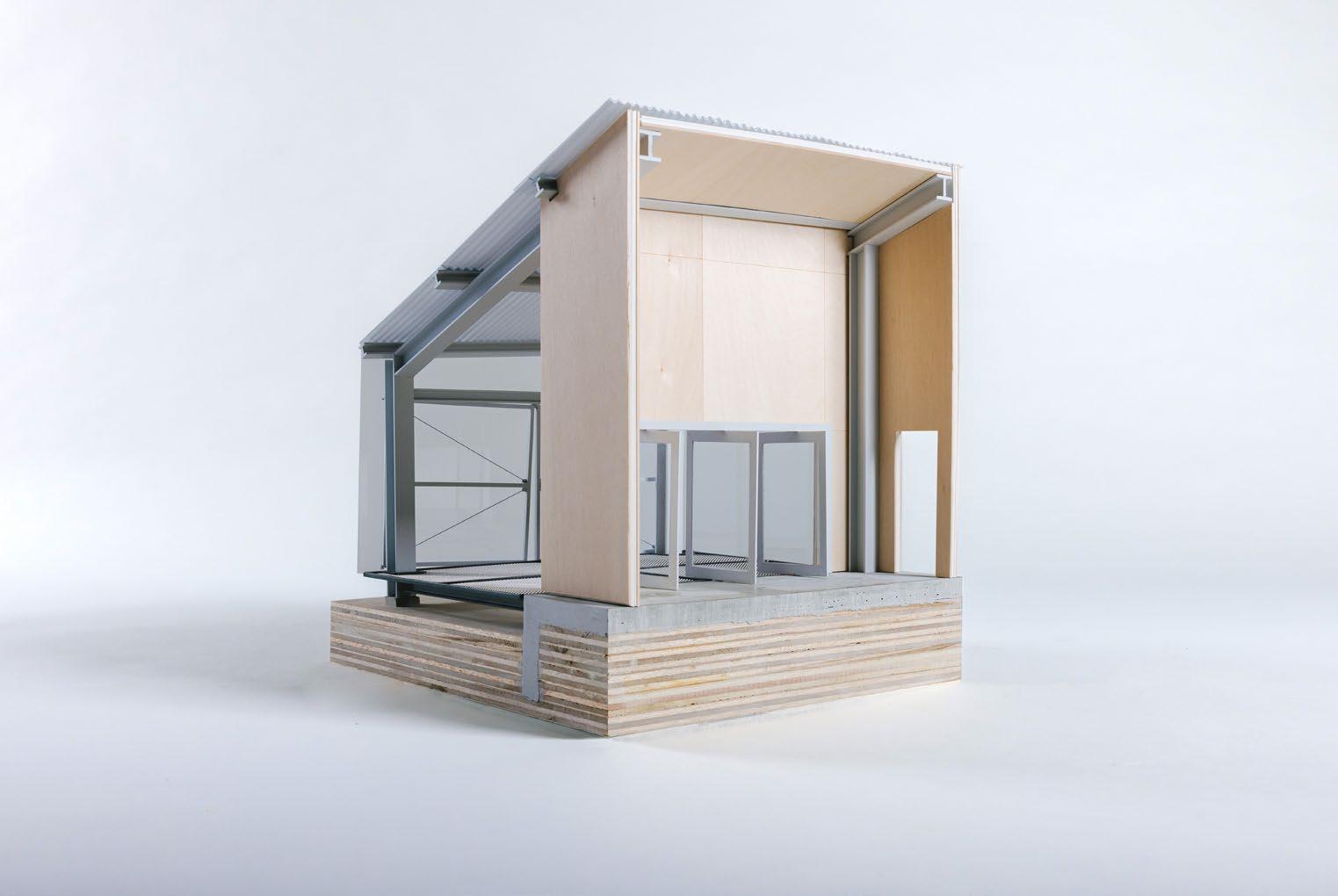

01.

1/2” = 1’ Chunk Model highlighting structure and building envelope.
